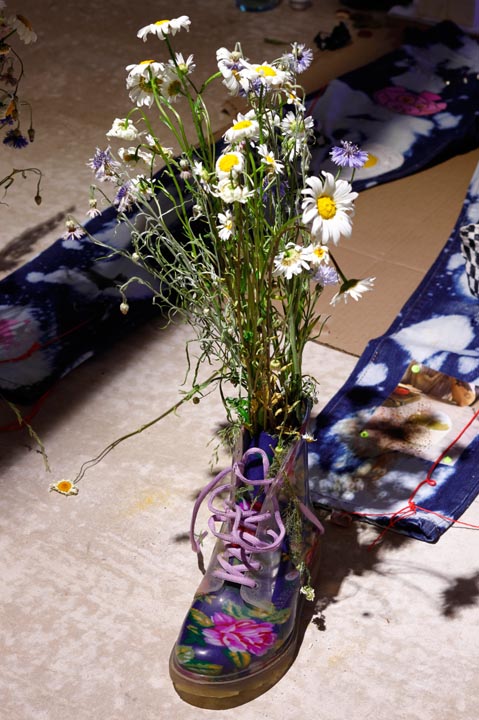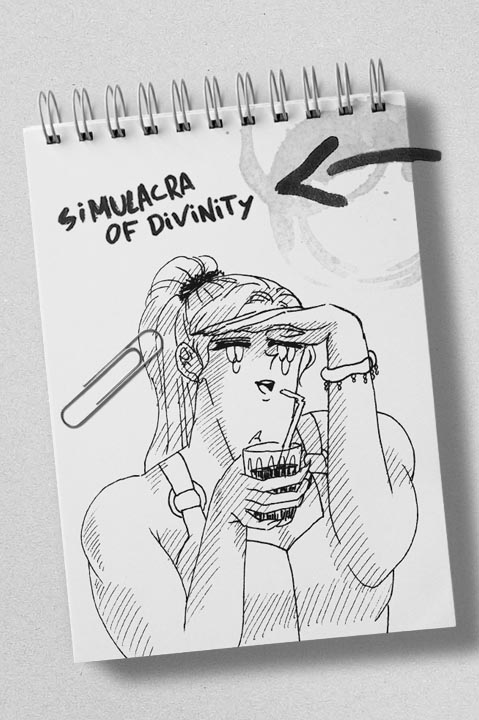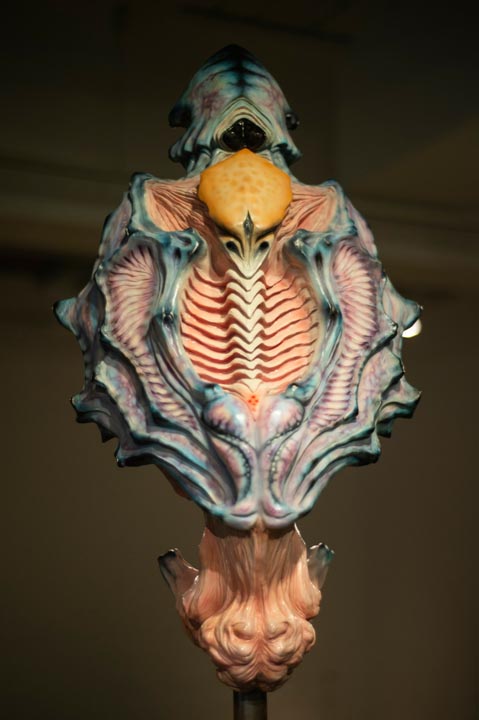OFLUXO
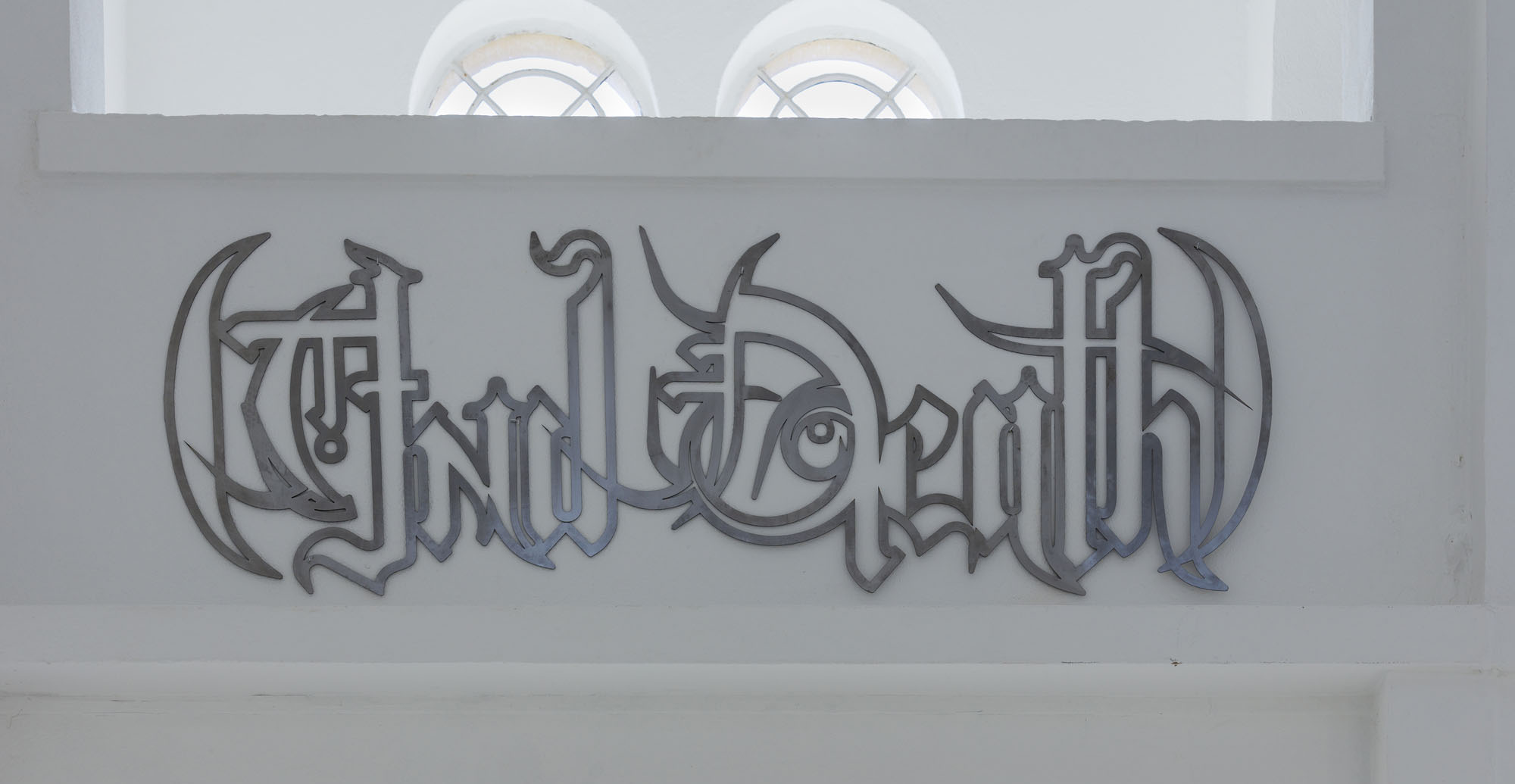
Digital Gothic
@ Centre d’art contemporain-la synagogue de Delme, France
Zoe Barcza, Alfred Boman, Nicolas Ceccaldi, Victoria Colmegna, Morag Keil, Clémence de La Tour du Pin, Maria Metsalu, Petros Moris, Jill Mulleady, New Noveta, David Rappeneau, Viktor Timofeev
Jun 22 – Sep 29, 2019
The exhibition Digital Gothic brings together artworks showing the resurgence (but especially the continuity) of sombre imagination, dark romanticism and the Goth aesthetic, in this time of widespread crises, marked by the effect of digital technologies and the internet’s increasing pervasiveness in the life of the global population over the past twenty-five years.
Text: Benoît Lamy de La Chapelle
Translation : Matthew Cunningham
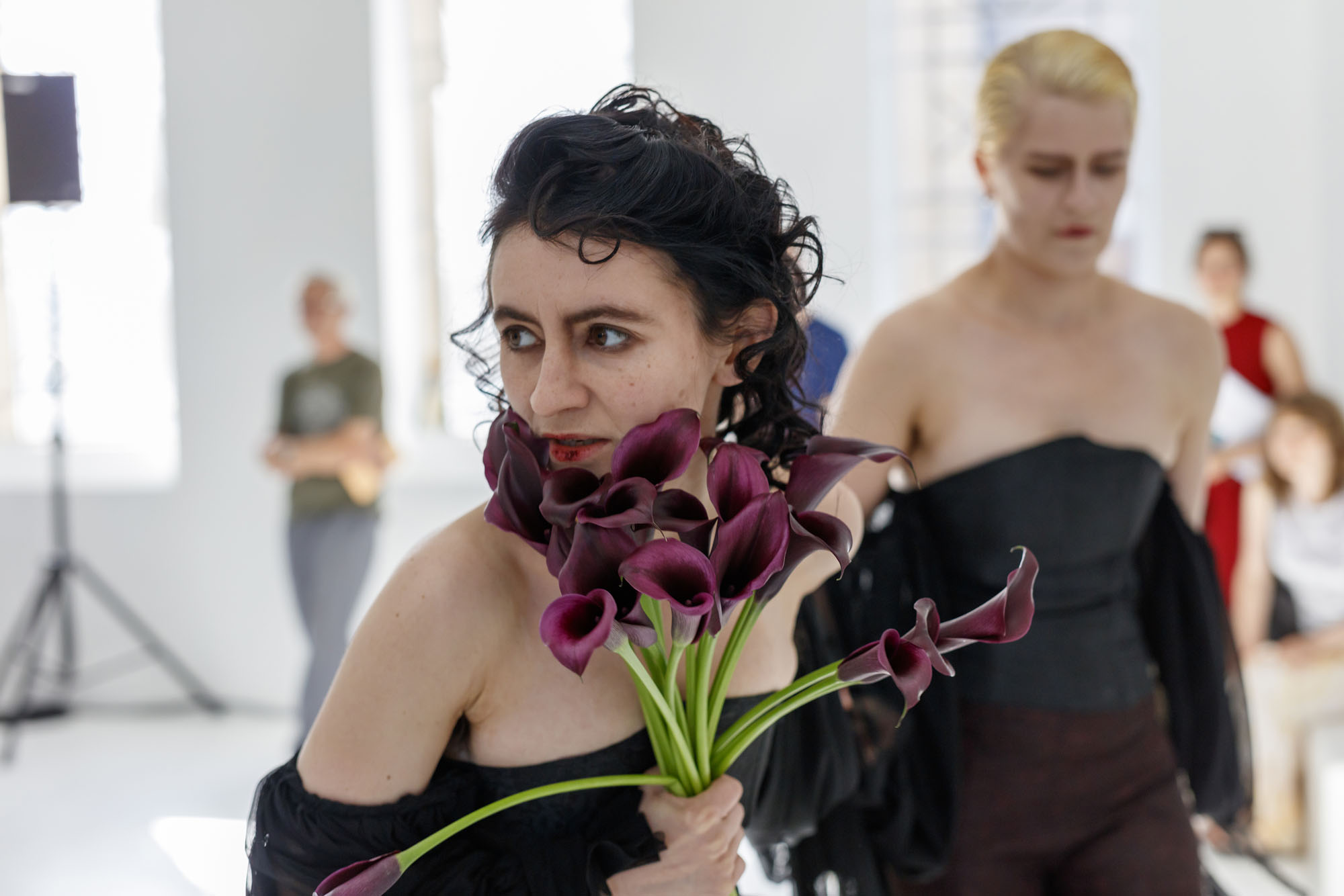
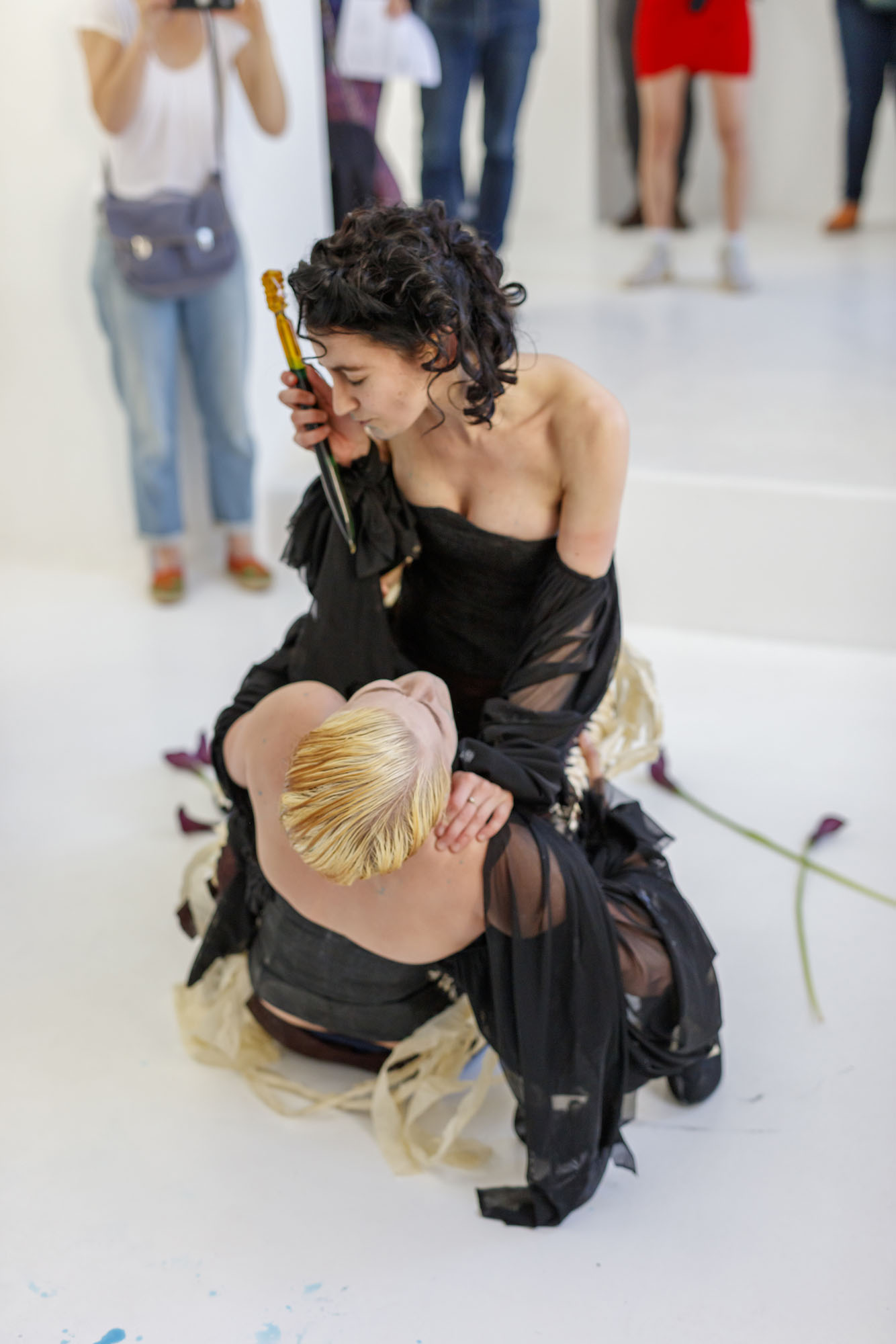
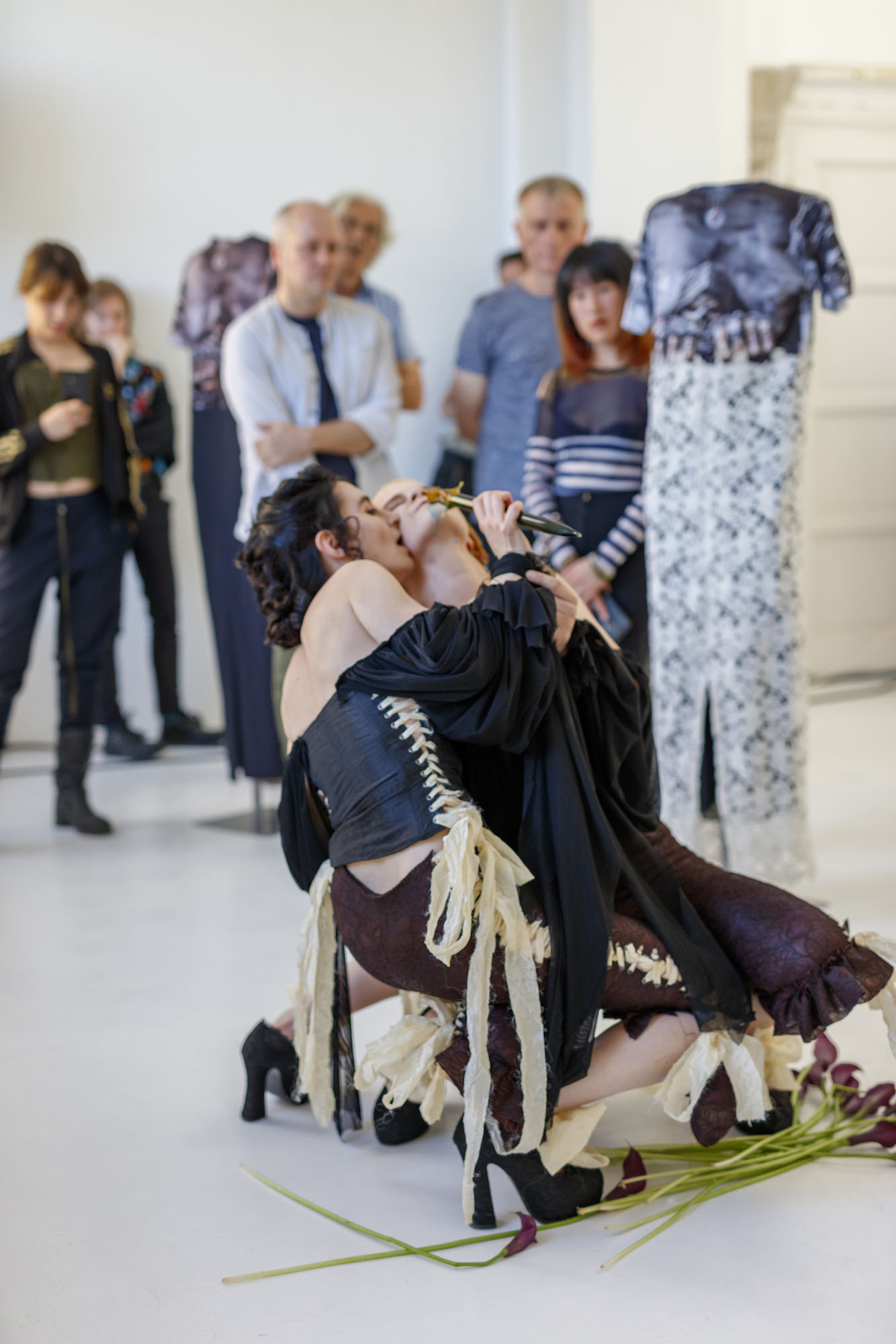
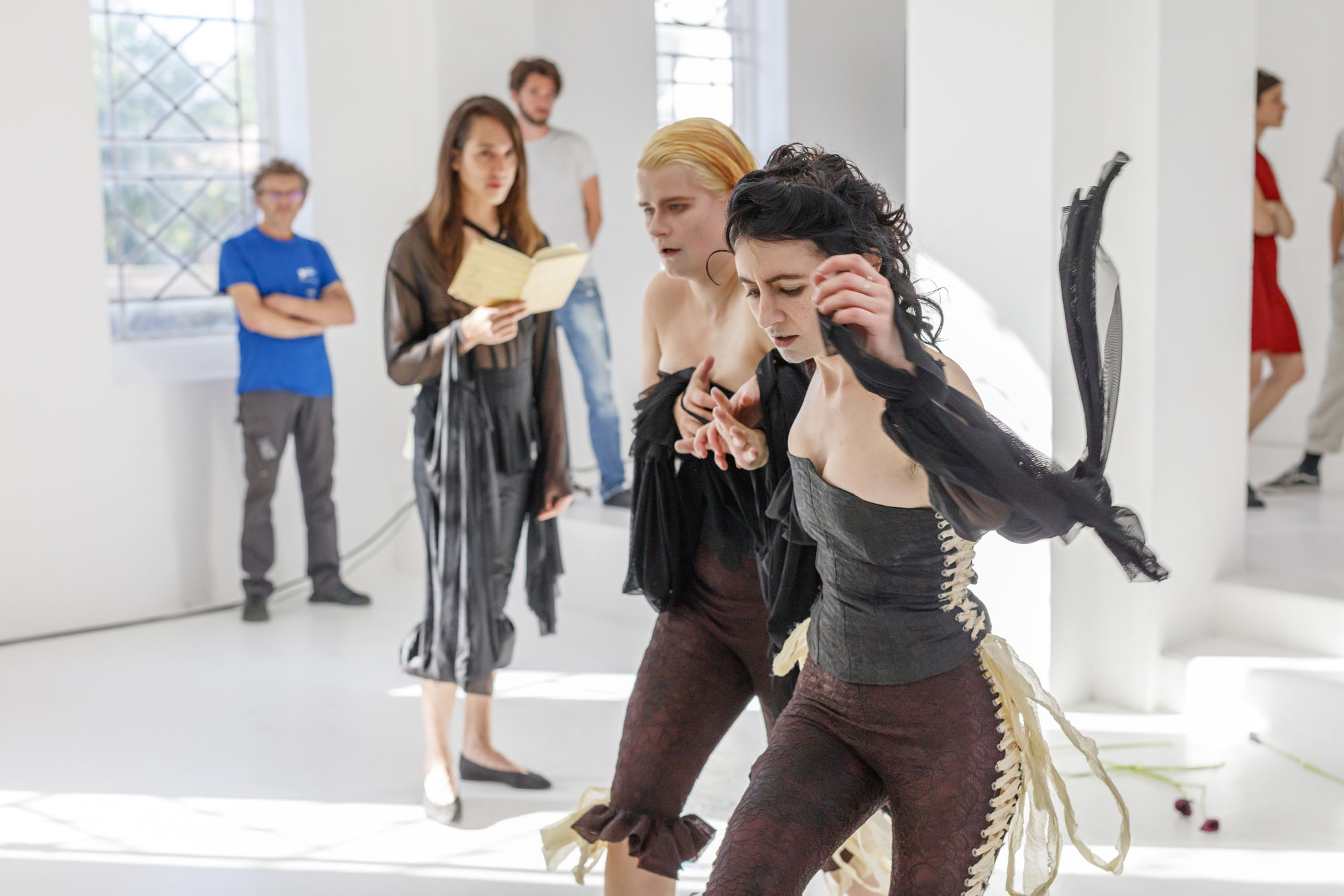
“Gothic” aesthetic, though it originates in medieval art and in a range of forms or symbols that appeared in the 12th century, is above all a fantasy, a mystification that came into being towards the end of the 18th century and developed considerably in the 19th century through literature, art and architecture. It is a constituent of romanticism’s gloomy version: dark romanticism (1), that of horror, romanticism’s irrational tendency, with disquieting phantasmagoria and the demonic grotesque, which embody fears, dreams, delirium and the darkness of the human being (2). The Gothic aesthetic and dark romanticism then evolved with symbolism, resuscitating ancient myths, reviving a symbolic language that allowed the imagination to reclaim its rights during a period (1870-1910) known for its rationalism and positivism. These tendencies continued in the early 20th century with expressionist cinema and through surrealism, which integrated the Freudian concept of the “uncanny”, as well as oneiric delirium and the psyche. To these three historical moments—recently highlighted in the exhibition L’ange du bizarre: Le romantisme noir de Goya à Max Ernst (3) —we should add the more or less evenly distributed presence of horror movies in the second half of the 20thcentury (including the giallo films), a veritable guiding thread for sombre imagination until the appearance of the “goth” subculture in the 1980s, which is indissociable from the cold wave and gothic rock music genres. The latter placed unprecedented importance on dress style, so that creativity extended beyond the frame of traditional art mediums to bodies and social behaviour, among both adults and teenagers. goth subculture was all the rage with young people, gaining popularity in the 1990s through music, but also through video games and TV shows, becoming a mass phenomenon that has never stopped branching out into many subcurrents: at the end of the millennium, dark romanticism had never been so popular.
Examining the evolution of dark romanticism and the goth aesthetic in the age of the internet and new media does not mean attempting a pointless classification of the multiple currents pursuing their proliferation. It is more about resolving to plunge into the gulf of data, to get carried away by what the logarithms make of that aesthetic. Also, within this exhibition, the term “Gothic” should be understood in the broad sense: a subversive counterculture that appeared in the late 18th century and endures to the present day through specific aesthetic codes, though it has been evolving and multiplying over time. Thus Digital Gothic proposes to consider the existence and future of that universe, that state of mind, and wonder to what extent it helps us navigate our complex contemporary situation, which goes beyond our cognitive abilities and disrupts our relationship to space-time. And if the recent boom in New Age, wellbeing and “happycracy(4)” are struggling to convince us, produced as they are by the neoliberal machine like a new opium of the people, what do we have left if not “the choice of darkness (5)”?
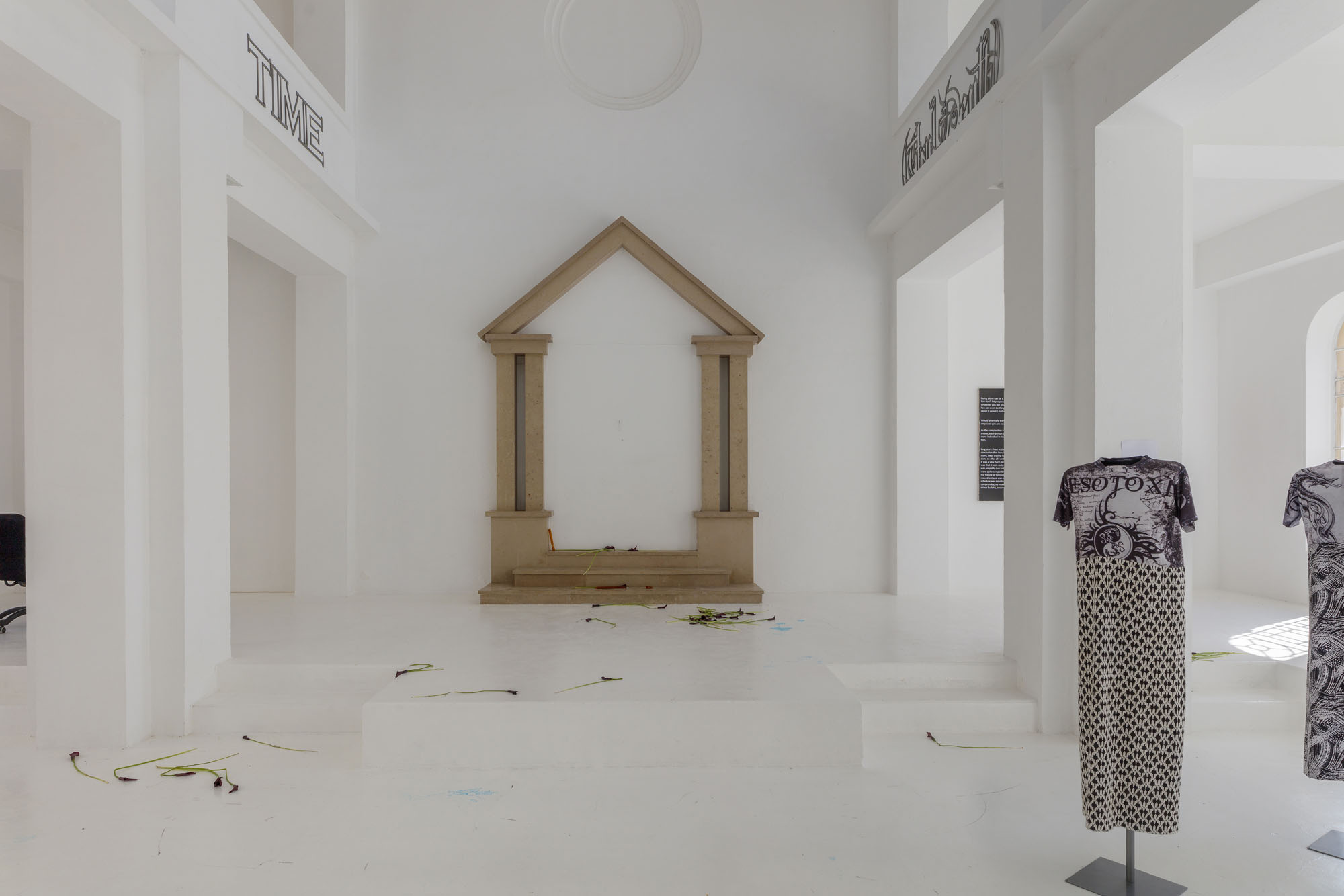
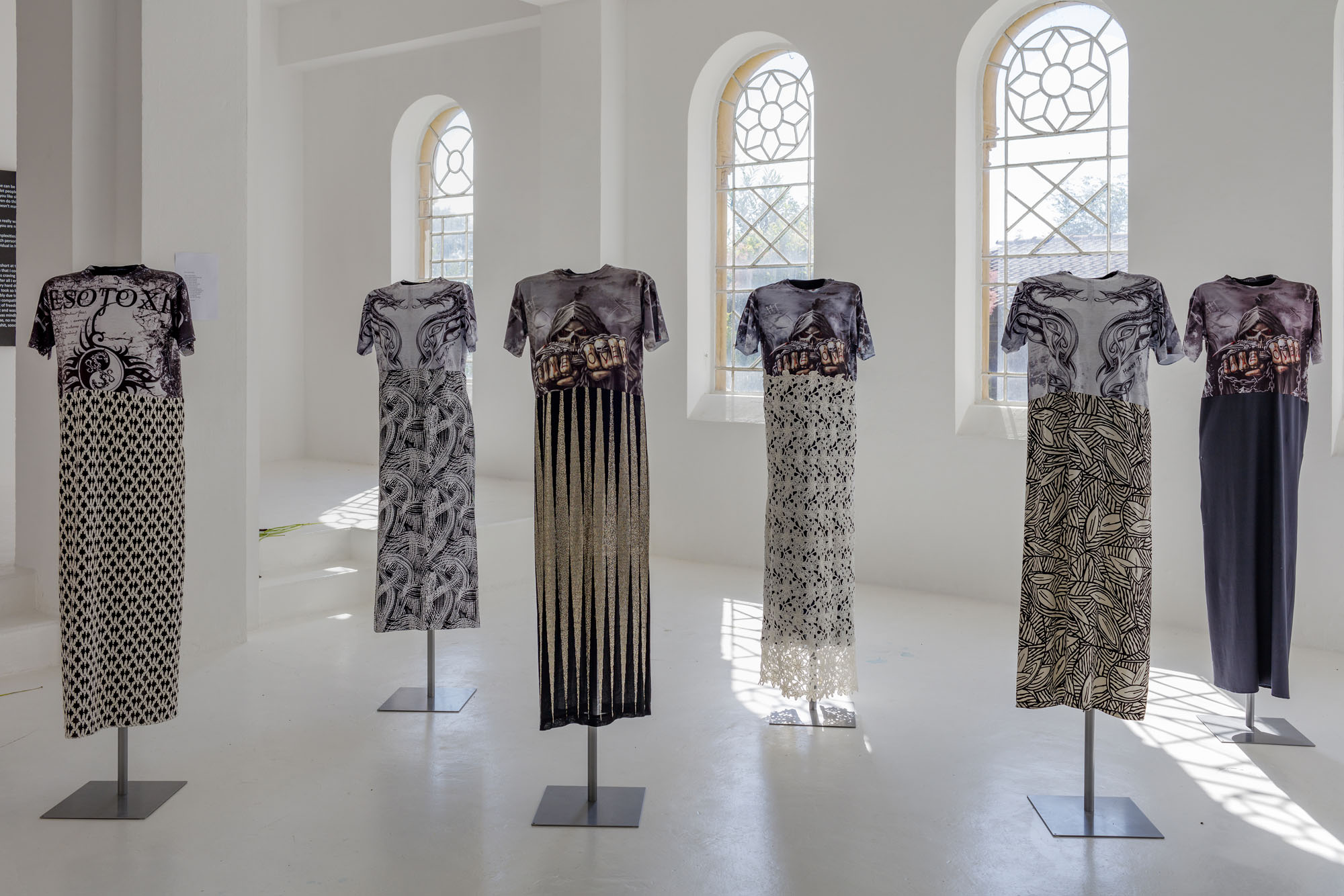
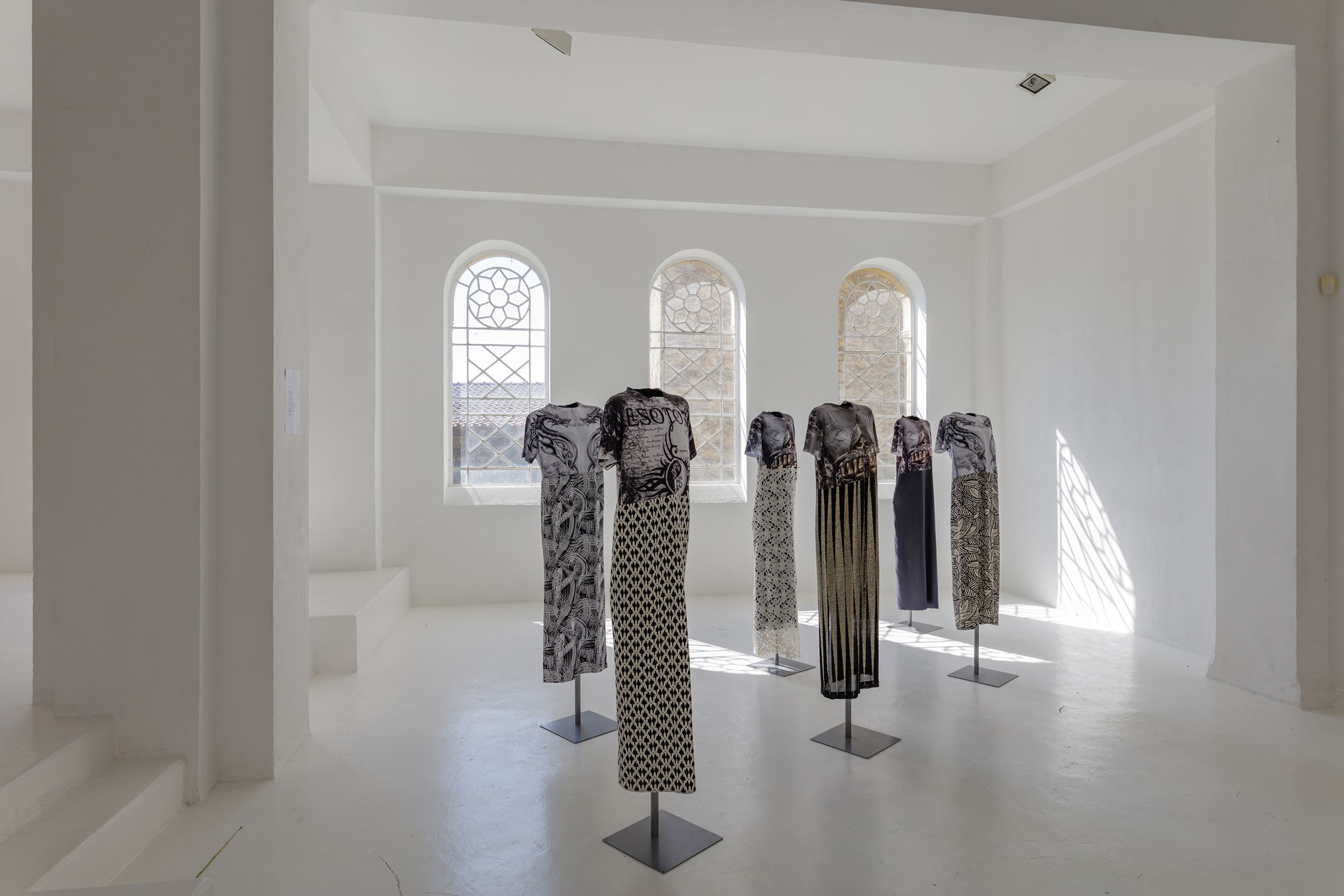
If sombre imagination has always existed since the late 18th century, it has taken on a new form with the digital revolution and its increasingly effective communication networks, its unfathomable and infinite quantity of information, plunging humanity into a new kind of existential turmoil. Setting aside all historical specificities, it is interesting to note that dark romanticism appeared after the failure of the Enlightenment, whose ideas seeped away with the blood of the terror and Napoleon’s wars; symbolism in the nightmare of the industrial revolution; surrealism following the butchery of the First World War; goth subculture in Margaret Thatcher’s England and the end of the hopes of May 68: these were all turbulent periods when man was increasingly deprived of his freedoms and disconnected from his natural environment.
Unlike historical sombre imagination—reviving what sociologist Philippe Rigaut calls “Index XIX”, namely “images making it possible to export, in our time of ephemera, aesthetics that may be historically dated, but tend towards the immemorial, because they are to the highest degree equivocal, undifferentiated, incomplete, ambivalent (6)”—the internet does not revive or export that Index XIX, but just as does all of the content it conveys and expands at every second, it ceaselessly feeds it and never lets it vanish: also, Index XIX is now no longer latent but constant. It is no longer a curiosity or something strange, but a living component of our connected age. The artworks in the exhibition Digital Gothic show this permanent connection to Index XIX, which is constantly provided with new content, new images, forms, appropriations, transformations…
The presented artists all grew up in the 1980s and 1990s, a period when the internet attained its final stage of democratisation, after having originally been created for military purposes. Although the web was first conceived as a free realm without any government framework where everything seemed possible, these artists have recognised the paradoxes at work today in this new locked regime of communication, the apotheosis of surveillance systems and the invasion of private life, playing out on the cloud, where Google now seems to know everything about our lives, while Mark Zuckerberg discreetly but surely pursues his candidacy for the presidency of the United States. Furthermore, the internet is only the protruding part of an iceberg, the rest of which constitutes what is called “darknet”, a vast, virtual, underground realm that is invisible and hard for government authorities to access, where hackers, terrorists, revolutionaries, paedo-criminality, snuff movies, illegal markets and alternative economies operate freely. A parallel world that is developing in the shadows, though it has major repercussions in reality, as it feeds more dark fantasies and imaginations. After dark romanticism’s popularisation in cinema and music, the internet is completing this process by placing the various goth aesthetics and symbols on the same level through Google Images, where living side-by-side without distinction are Gothic medieval architecture, The Matrix, Marilyn Manson, pastel goth, Hugo/Poe/Novalis/Baudelaire, Cybergoth, sadomasochism, Fuseli, Blade Runner, Hamlet, Freddy Krueger… Goth aesthetic is now too multifarious to be definable: it fell into the abyss of Web 2.0.
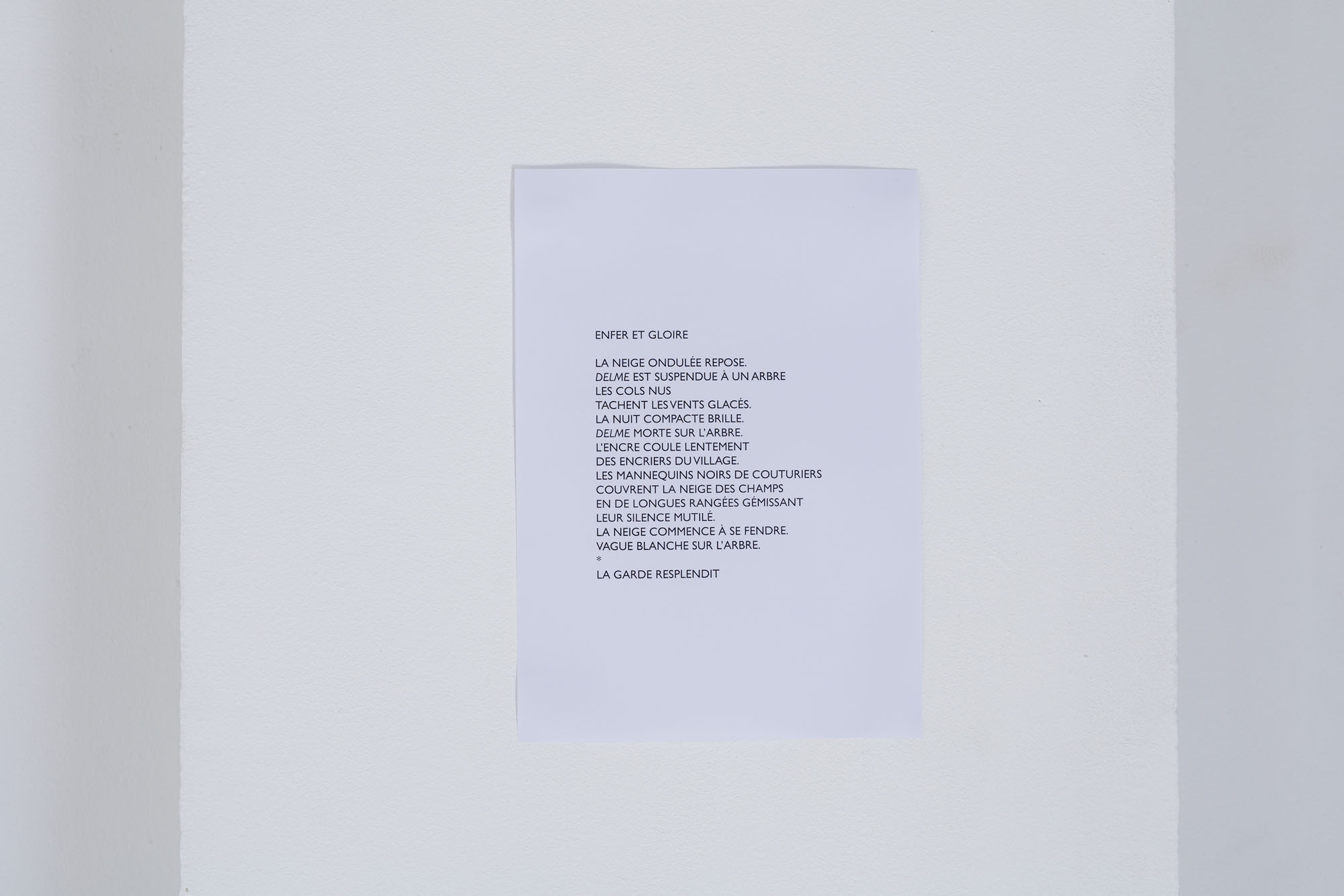
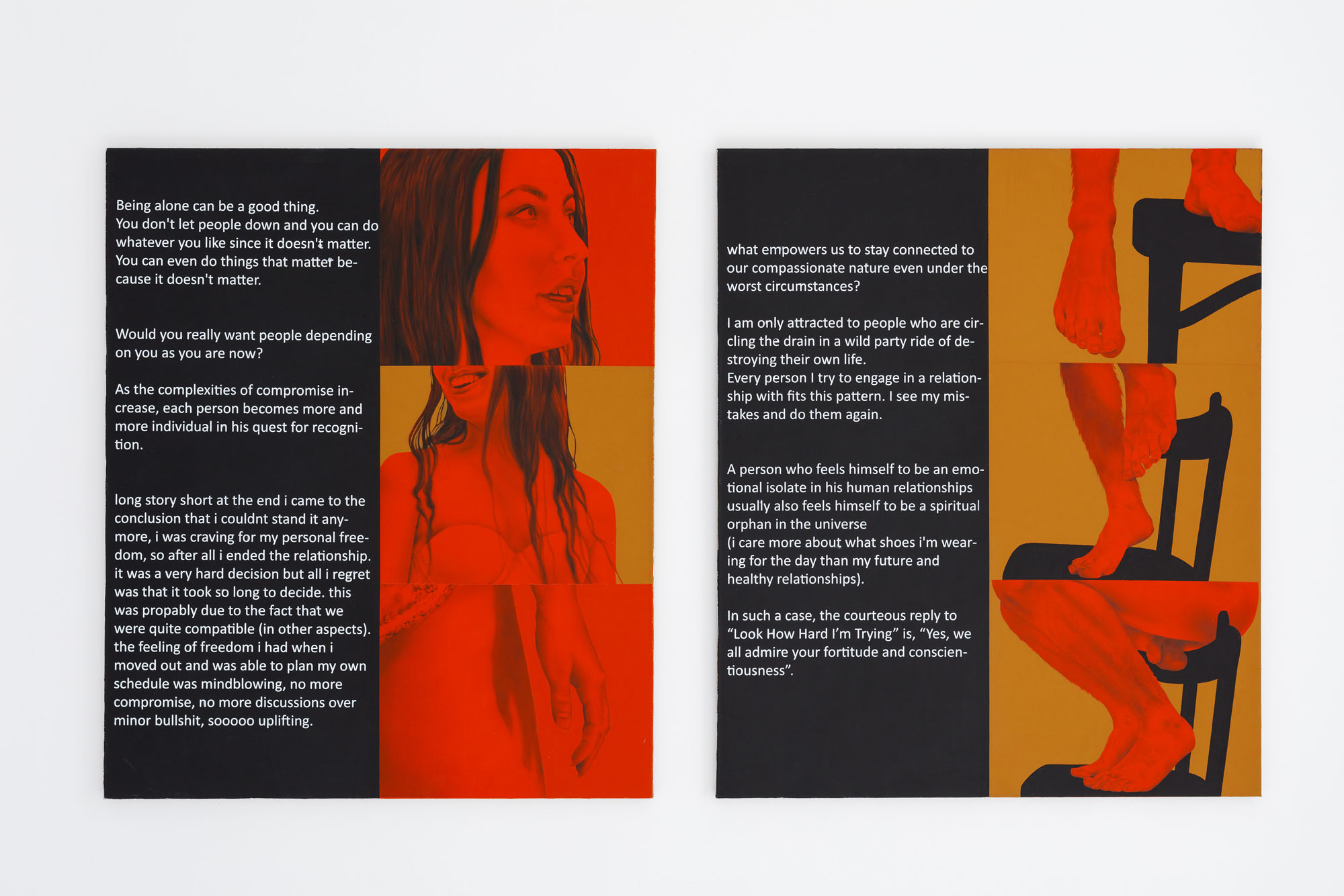
Traditionally, the problems of existence have encouraged sombre, sensitive souls—dismayed by people’s general hypocrisy and by the malaise of our societies—to take some distance in order to extricate themselves from a system they viewed as alienating, depressing and cruel, in which they could not find their way. Index XIX enabled them to withdraw into a mental universe (reverie, dreams, poetry) or a physical one (visits to cemeteries, sites in ruins or cabinets of curiosities, collecting objects that create a “Gothic” atmosphere) conducive to voluptuous delirium, to finding the sublime. It was then possible to create a hermetic “elsewhere” for oneself, and the boundary between reality and imagination separated two well-defined worlds. With the advent of the internet, long-distance communication, virtual relationships and a world in which science-fiction, after having anticipated reality, is gradually becoming its mirror, virtual reality is no longer an oxymoron: taking flight into some sort of virtual imagination is now obsolete. As Guy Debord foretold (“Within a world really on its head, the true is a moment of the false (7)”)—as did Jean Baudrillard later with his concept of hyperreality (8), presenting a world already dominated by virtuality—the real and virtual are today one and the same. All action/interaction carried out through a screen is simultaneously real and virtual. Through the “alias”, social networks like Facebook and Instagram make it possible for anyone to invent an avatar from themselves, to distort their identity, their gender and their life, just as surgery makes it possible to change your face or sex. There is no need to flee the real into the virtual since we are now in possession of vast, ever-more-accessible technology facilitating the transposition of imagination into reality and vice versa. Likewise, although war and terrorism are spectacles to share on Facebook or watch on a video podcast, it is not impossible to lift one’s eyes from the screen and see one’s fellow citizens being coldly murdered on cafe terraces, from Paris to Surabaya. Truth and lies also coexist through fake news, a new mind-manipulation technique that appeared with the internet, because its information circulates and streams at such a high speed that it is impossible to verify, and is therefore often perceived as true. Here again, lies organised by influential groups—right up to statesmen who are supposed to be trustworthy (from Donald Trump and his “alternative facts” to Emmanuel Macron and his ambiguous management of the Yellow Vests movement)—encounter no obstacles: the internet has made these fraudulent uses practically normal.
The virtual/real conveyed by the internet is proliferating in the countryside and the most remote areas of the world. Like many others, the rural territory surrounding the village of Delme has been haunted by dark tales and legends, by numerous monsters sowing terror at the crossroads, by the witches of the Marsal saltworks, or by the marquis Stanislas de Guaïta—an occultist, a co-founder of the Kabbalistic Order of the Rose-Cross, a poet, and the author of essays on the accursed sciences like Le temple de Satan (1891), who lived in the nearby Alteville castle in Tarquimpol—and more recently by the “sorcerer of Marsal”, whose children mysteriously disappeared from his ashram, which has since been abandoned, leaving wind-battered frescos of occult symbols… Here, the sombre imagination produced by this rural territory adds to another very tenacious myth growing out of urban life and tourism, which says that the countryside is a natural zone free of pollution, a haven of peace, a getaway for city dwellers who want to breathe “the open air”. This myth, which deliberately contrasts nature and culture, urban and rural, became groundless a long time ago: the countryside’s lands are cultivated industrially based on monoculture, its fields are steeped in pesticides, and its villages, sapped of their own practices and dynamics, find themselves being extended by housing estates with rendered facades serving as sleeping quarters for urban workers. The tentacles of fibre optics will soon reach the homes of this territory already connected to the internet. In this context, the countryside acts as a reservoir (of humans, food, leisure) for the city. It is subject to the city: it is an additional part of it, instead of freely developing for its own sake.
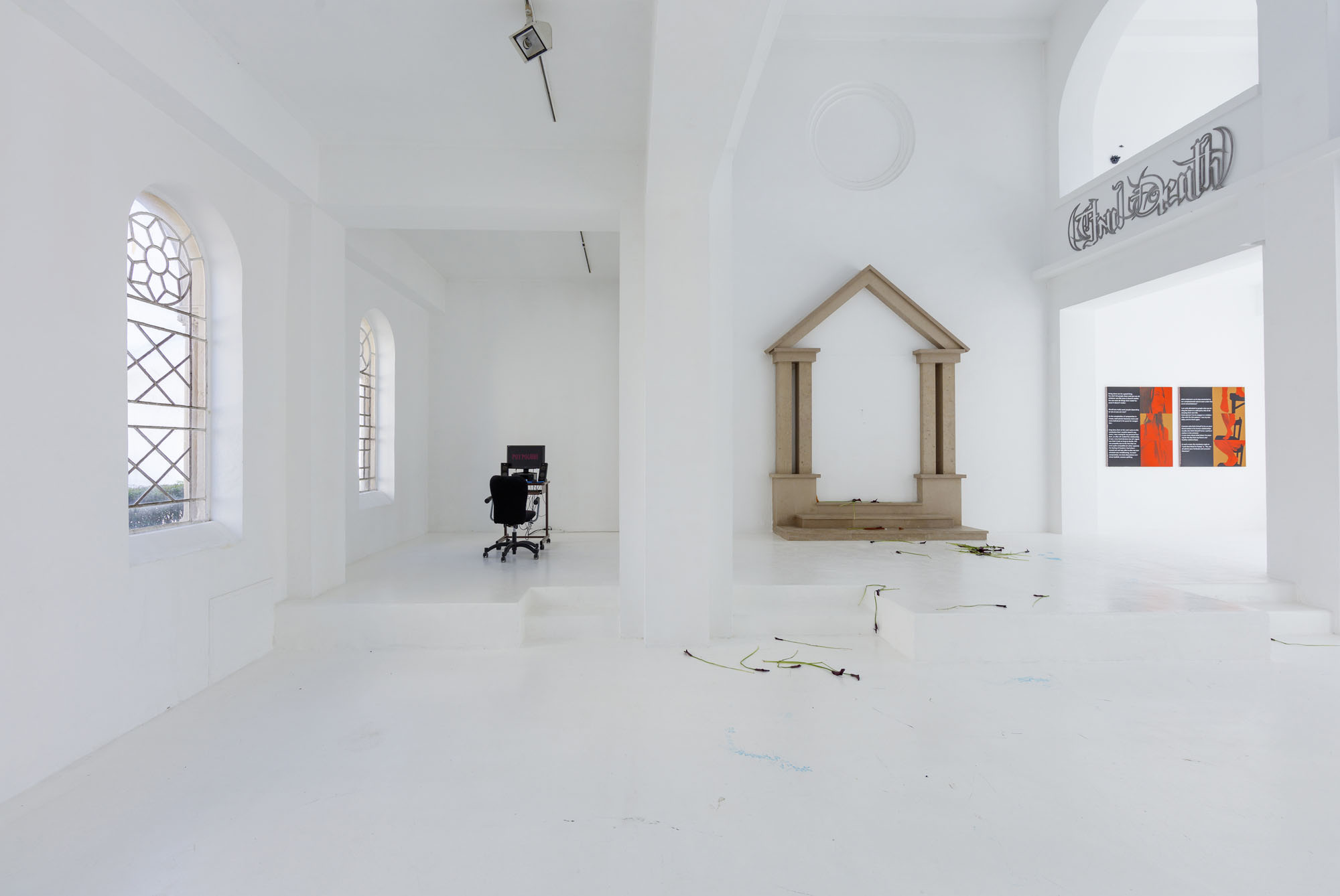
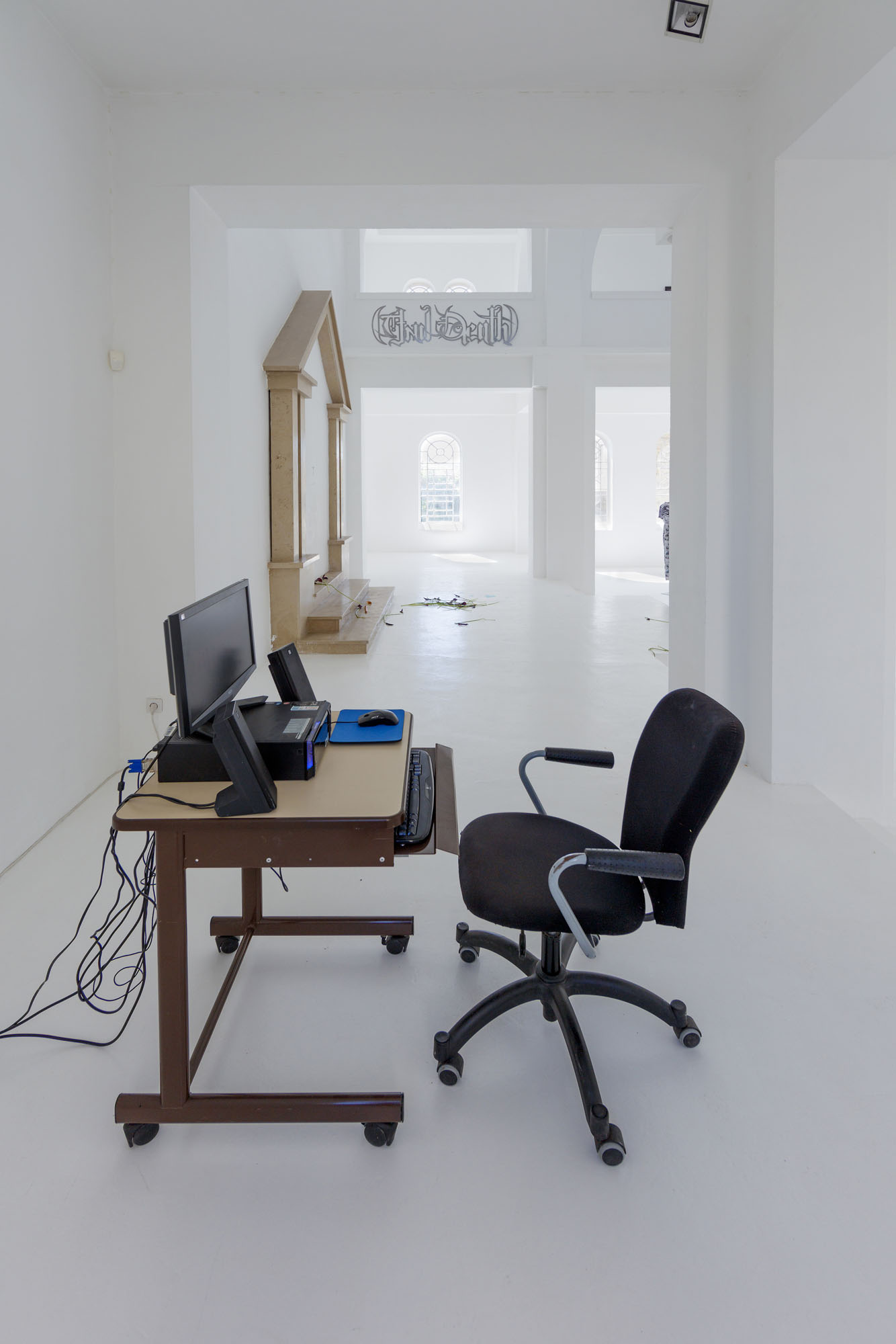
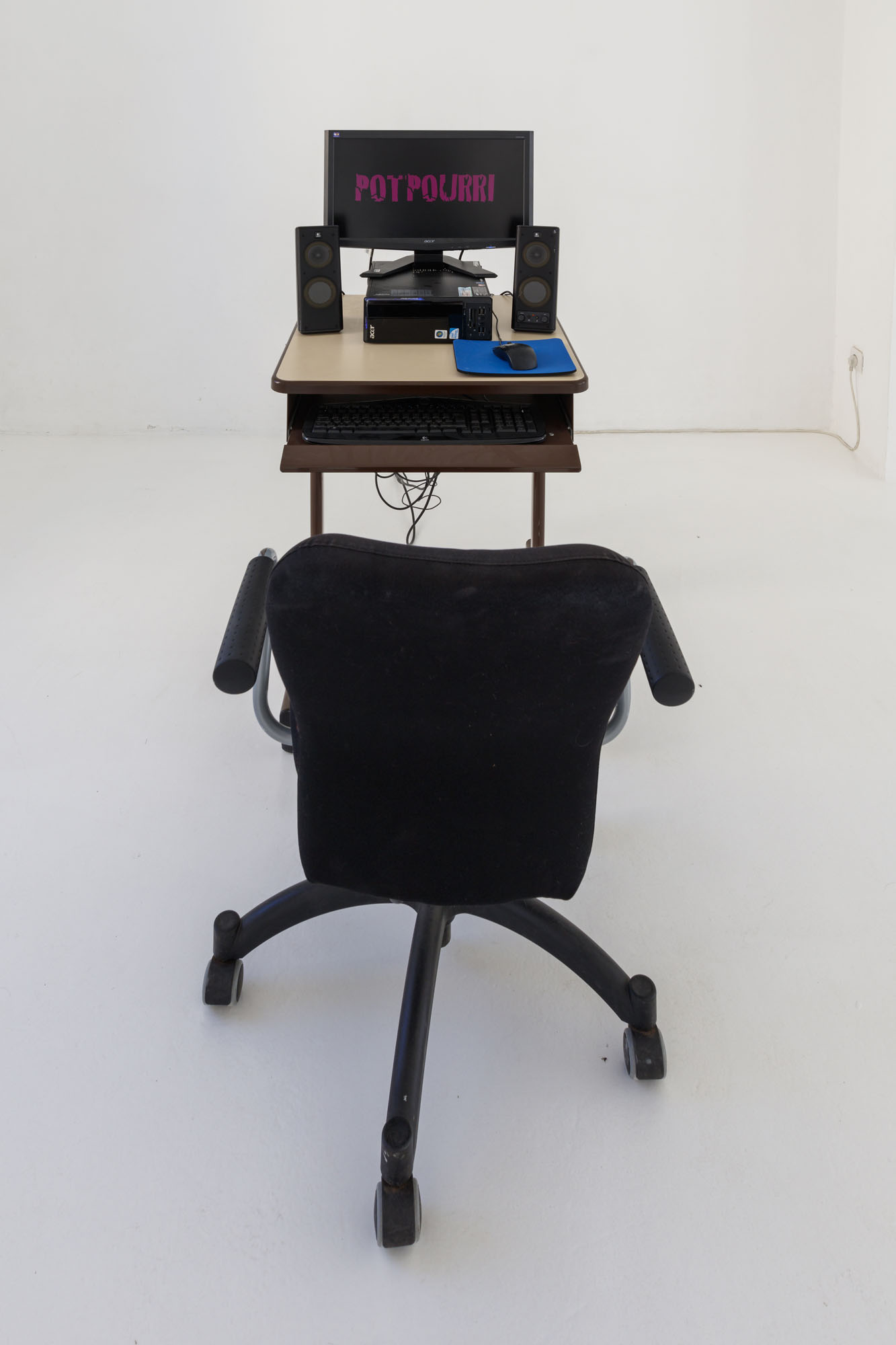
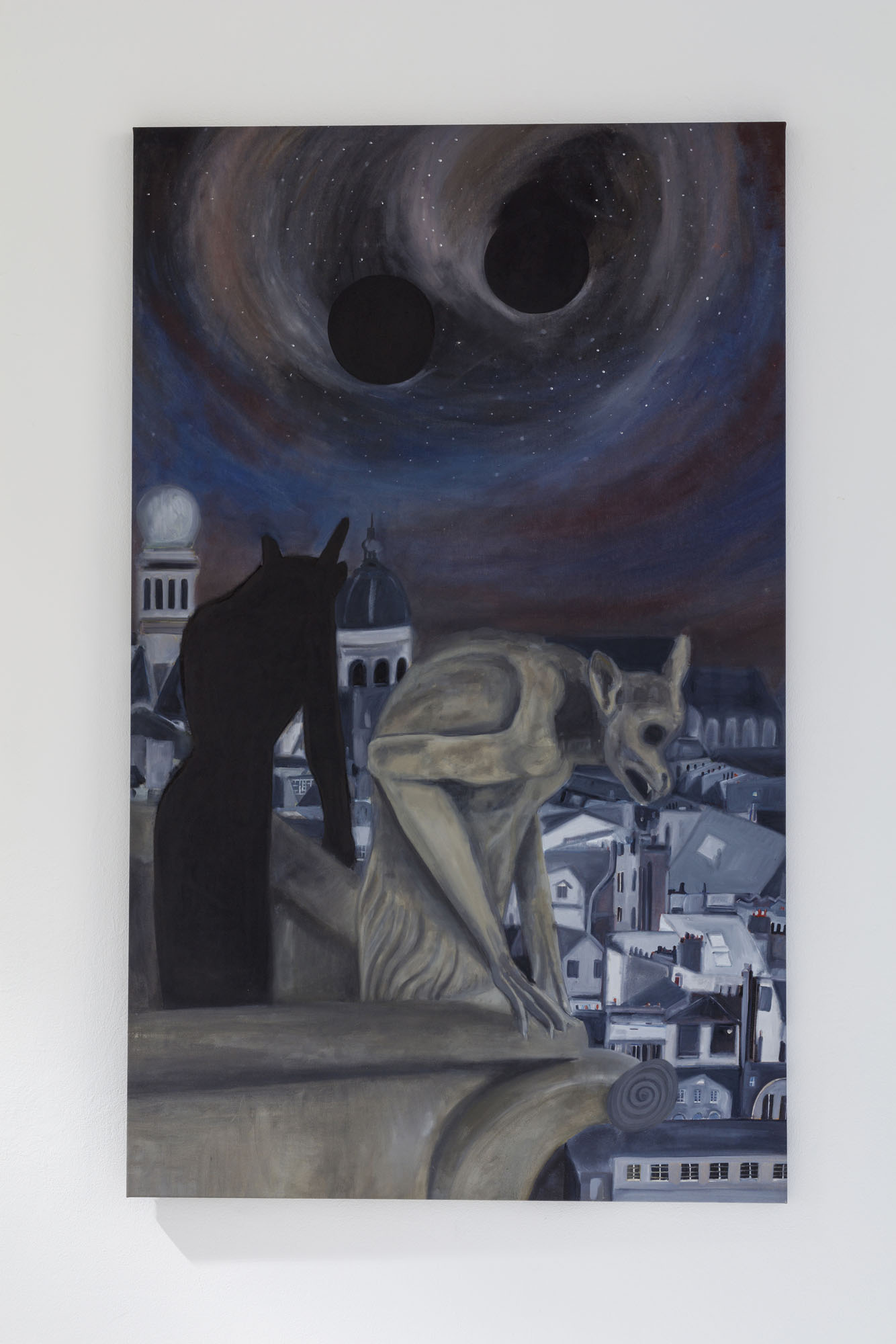
Like everyone of their generation, the artists presented in the exhibition have also been affected by the visual power of images of catastrophe, which have been broadly conveyed by the media over the past twenty-five years. These images have deeply penetrated the collective unconscious owning to their repeated circulation and their omniscient character, linked to the proliferation and availability of different media in our contemporary societies. Like subliminal images, they etch themselves onto minds. Their impact is all the more powerful if they mark the end of an era, the end of a civilisation or the end of a reign. It is enough to mention September 11th, the death of Gaddafi, or more recently the riots of the Yellow Vests movement or the blazing roof of Notre Dame in Paris. Also, we have been able to observe a growing interest in representations of catastrophes and violence, as well as the strong presence of apocalyptic scenarios in the works of many artists over the past ten years, and therefore an increasing interest, a fascination for images and atmospheres of these kinds. And this is not limited to the visual arts field, because at a larger scale, the “Health Goth” fad has spread a whole range of black sportswear to a lot of teens, going beyond the classic style of the goth subculture, since it is more technical and sophisticated. Music (with dark synth, dungeon synth or Light Asylum, Billie Eilish…) and cinema (with Only Lovers Left Alive by Jim Jarmusch (2013), the sequel to Blade Runner (2017) and the remake of Suspiria (2018)) are also contributing to this trend. The works presented in Digital Gothic could consequently show a new activation of Index XIX using dark romanticism’s repertoire of aesthetic codes and symbols, something they do in a sense: they summon death, horror and destruction, intense and tormented eroticism, defeated loves, foggy and antiquated atmospheres, the ambivalent figure of the angel of darkness… But drawing sources and inspiration from the plethora of images available on the internet in an already sombre present, these works offer no exits: instead they begin a brutal return to reality. Hence the feelings of shock, anxiety or unease that can arise when encountering them, along with a certain delight in destruction and violence, that is to say in the sublime. This concept simultaneously opposes and surpasses that of the beautiful, in that it strives for the impossible, brushes with boundaries and flirts with horror. This curious paradox that seems inherent in human nature manifested itself in composer Karlheinz Stockhausen when he unscrupulously declared that the 9/11th catastrophe was “the greatest work of art that is possible” (9): the level of fascination with this event was such that it drew it to the sublime. New York then became Pandæmonium, the capital of hell imagined by John Milton in his poem Paradise Lost (1667) and painted in the 19th century by John Martin using the same apocalyptic visual codes as those of the images of the World Trade Centre on fire. In his Poetics (10), Aristotle wrote that what inspires disgust in life can be a source of pleasure in art. Later, Edmund Burke observed that if the sublime provokes a tantalising feeling of horror, viewers can only experience this state if they know the event does not concern them directly (11). Though it is true that today, screens make it possible to maintain a comfortable distance from our world’s darkest events, it is becoming more and more difficult not to feel that they concern us. Because this distance is only relative, and horror is found in contact with others just as much through the hyperreality of information content as through the increasingly violent physical and moral attacks of biopower. So it is with very little distance that these artists are experiencing the current crises characterising the 2010s, such as the rise of extremes and populism, the migrant issue, the Capitalocene, work casualisation, planned obsolescence, the food industry and the crisis of political representation.
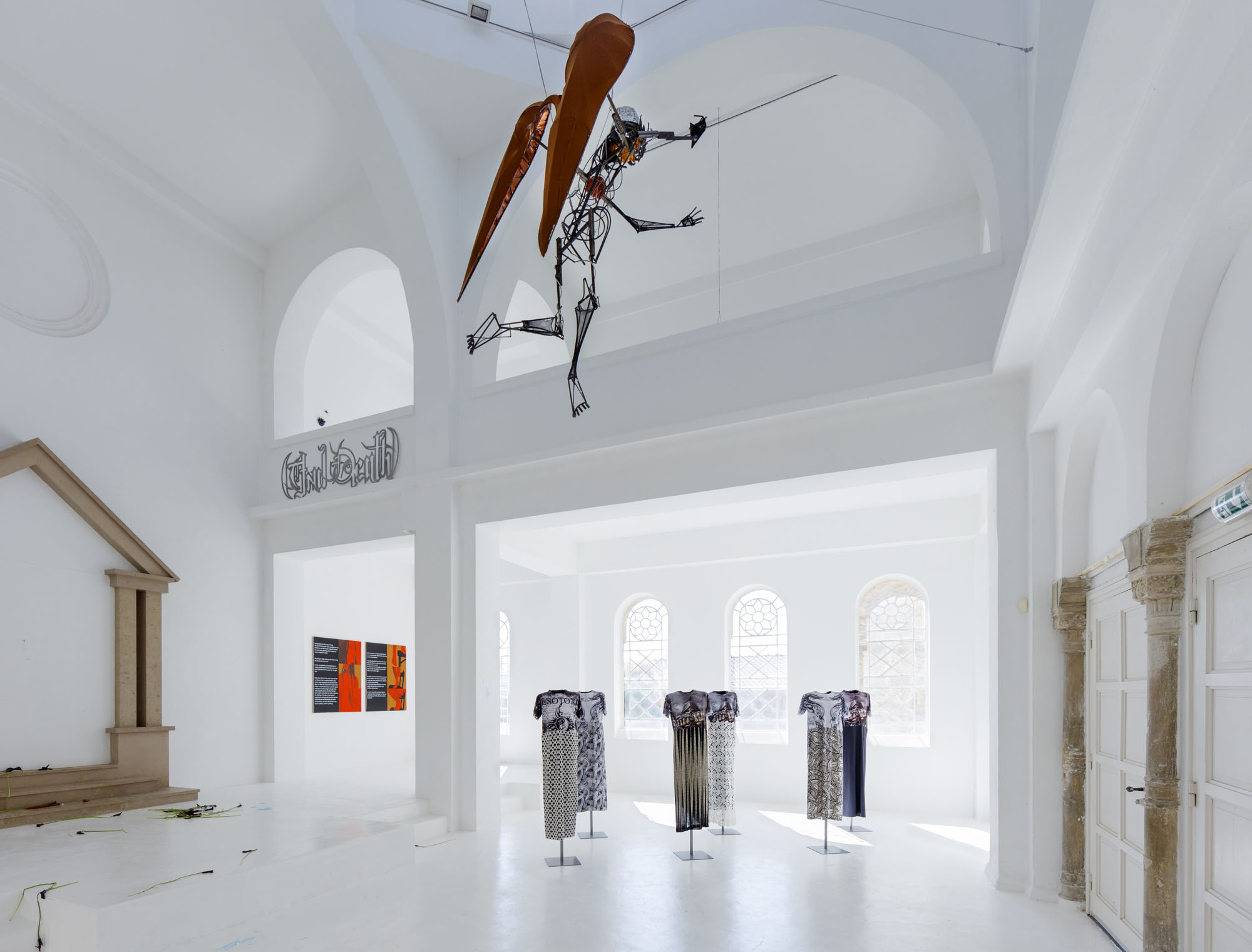
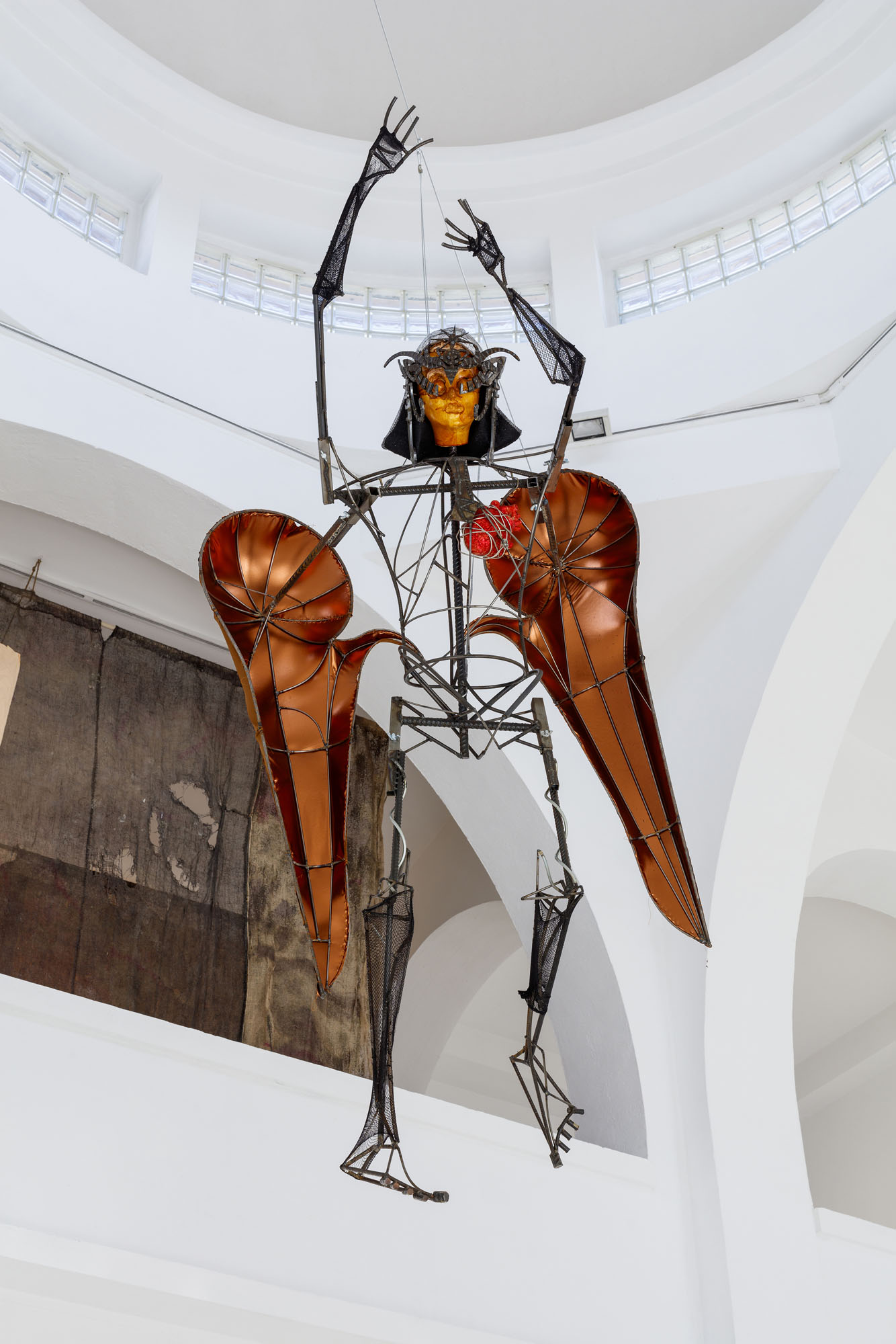
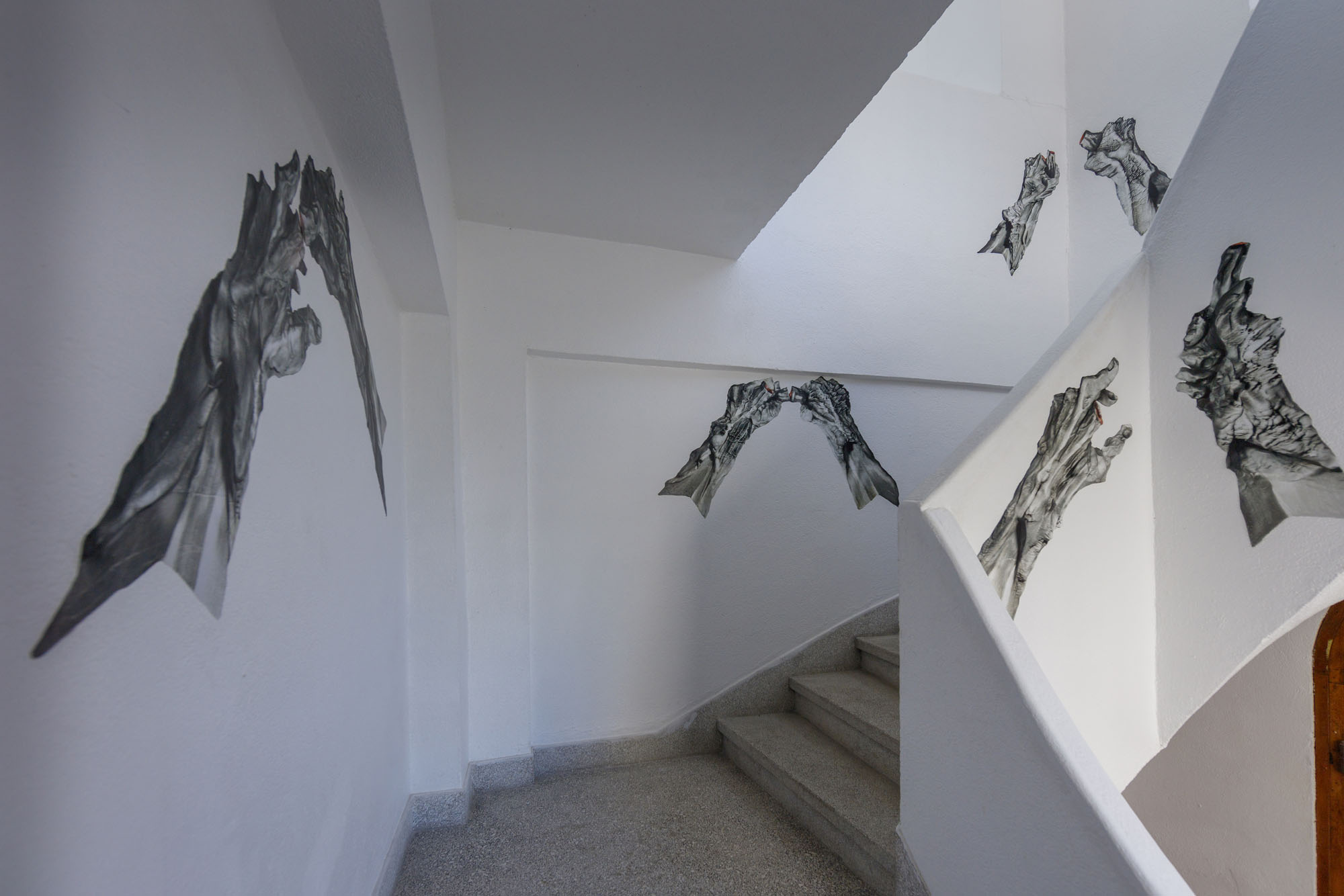
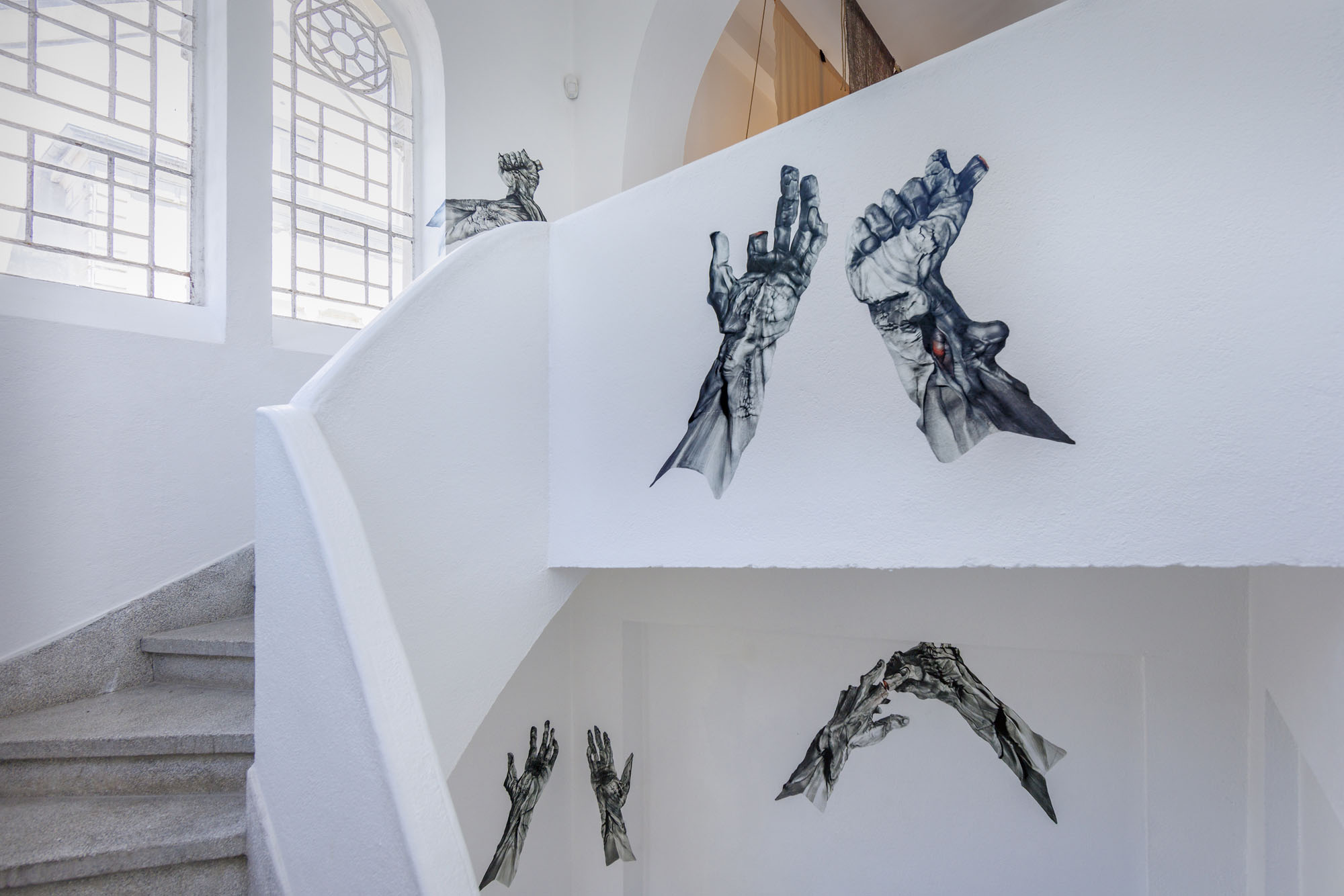
Therefore, in the internet era, we no longer believe that goth aesthetic is external to the real world. On the contrary, we think this has become its foundation: once the veil of contemporary mythologies has been lifted, let’s face up to things—our world is dark. This does not mean it is beyond redemption, nor that it is devoid of joy and cheerfulness.
Hyperinformed (which does not always mean well-informed), these artists are facing a dark period of world history, and are wondering, as many are, how to conceive of the future under these conditions. Although the artworks they are presenting in the exhibition Digital Gothic seem pessimistic on the surface, this is a deep misunderstanding linked to stereotypes that have long accompanied dark romanticism and the goth movement, and also linked to a misapprehension of how death, sadness and darkness are viewed in them. According to the goth subculture’s way of thinking, “death is not an end in itself or a gangrene eating away at the soul, but a refinement of consciousness, an acquired inner dynamic that reassures through the way we learn to assimilate it throughout our lives. Suffering is an authority autonomous from the conscious self, and the only reasonable choice is to find a harmony between this entity and oneself, and integrate it. One can be stronger if one makes it malleable instead of being subjected to it. […] Death is an impartial doyenne, the friend you have to live with because she is ultimately the ineluctable conclusion of every life. […] This attitude is intended to be constructive, because although it does not free us from our condition, at the very least, it allows us to achieve a kind of serenity (12)” that one can believe as beneficial for building life. Likewise, in the context of her study on the posthuman, Rosi Braidotti relativises death, which she considers a necessary life event: “Being mortal, we all are ‘have beens’: the spectacle of our death is written obliquely into the script of our temporality, not as a barrier, but as a condition of possibility (13)”. Therefore, doing away with viewing death as tragic becomes essential for feeling free to conceive of the future beyond our life. Dark romanticism and the goth aesthetic then appear much less pessimistic than one might have thought, and although it is apolitical or avoids the political, this state of mind has always been contemporaneous with major social struggles aspiring to the same liberating ideals: as surrealist Benjamin Péret wrote, “the origins of the Gothic novel must include the revolt against the external world produced by man, and the revolt against the human condition itself, that phoenix rising from its own satisfaction (14)”. If this external world is now merging with goth aesthetic, maybe we are finally reaching the conclusion of a heavy postmodernity going around in circles in an endless present: in art and contemporary thought (15), one now senses an aspiration to new stories and new narratives, as necessary remedies to the gangrene of the neoliberal capitalism. If the real and the virtual coexist, if imagination and raw truth are coming together, it would consequently be possible to rely on science-fiction to produce new utopias whose chances of becoming concrete would increase according to this theory. Against the fatality of the moment, the impression of being unable to imagine oneself in a better future, it would be possible to oppose everyone’s possibility of constructing a story for the future, rooted in reality and based on that which exists, giving free reign to political imagination, while shedding current burdens like guilt, resentment or cynicism. Although dark romanticism has never saved the world, it has always made it possible to make breaches and stimulate the instincts of freedom. In this early 21s tcentury, it remains an authentic model of inspiration, a powerful source of energy for building futures.
(1) The term appeared for the first time in Mario Praz’s study The Romantic Agony, Meridian Books, New York, 1956 (original Italian edition published 1930).
(2) Gero von Wilpert, Sachworterbuch der literatur, Stuttgart, 2001, p. 743.
(3) L’ange du bizarre. Le romantisme noir de Goya à Max Ernst, exhibition catalogue. Städel Museum, Frankfurt am Main and Musée d’Orsay, Paris, Hatje Cantz, Paris, 2013.
(4) See Edgar Cabanas and Eva Illouz, Happycratie, Premier parallèle, Paris, 2018.
(5) “L’homme qui ne médite pas vit dans l’aveuglement. L’homme qui médite vit dans l’obscurité. Nous n’avons que le choix du noir.” in Victor Hugo, William Shakespeare, I, V, Gallimard, Paris, 2018.
(6) Philippe Rigaut,More than life – du romantisme aux subcultures sombres, Rouge profond, Aix-en-Provence, 2015, p. 43-53.
(7) Guy Debord,Society of the Spectacle, Black & Red, Detroit, 1970, p. 4.
(8) See Jean Baudrillard, Simulacra and Simulation, University of Michigan Press, Detroit, 1994.
(9) https://www.nytimes.com/2001/09/30/arts/music-the-devil-made-him-do-it.html
(10) See Aristotle, Poetics, Penguin Classics, London, 1997.
(11) See Edmund Burke, A Philosophical Enquiry into the Origin of Our Ideas of the Sublime and Beautiful, R. and J. Dodsley, 1757.
(12) http://meusgoth.canalblog.com/archives/2006/03/27/1592136.html
(13) Rosi Braidotti, The Posthuman, Polity Press, Cambridge, 2013, p. 132.
(14) Benjamin Péret, “Actualité du roman noir”, in Arts, no. 361, 29 May–4 June 1952.
(15) On this subject, see all of Donna Haraway’s writings of course, but also those of Yannick Rumpala, Sady Plant, Patricia MacCormack, and the Laboria Cuboniks collective.
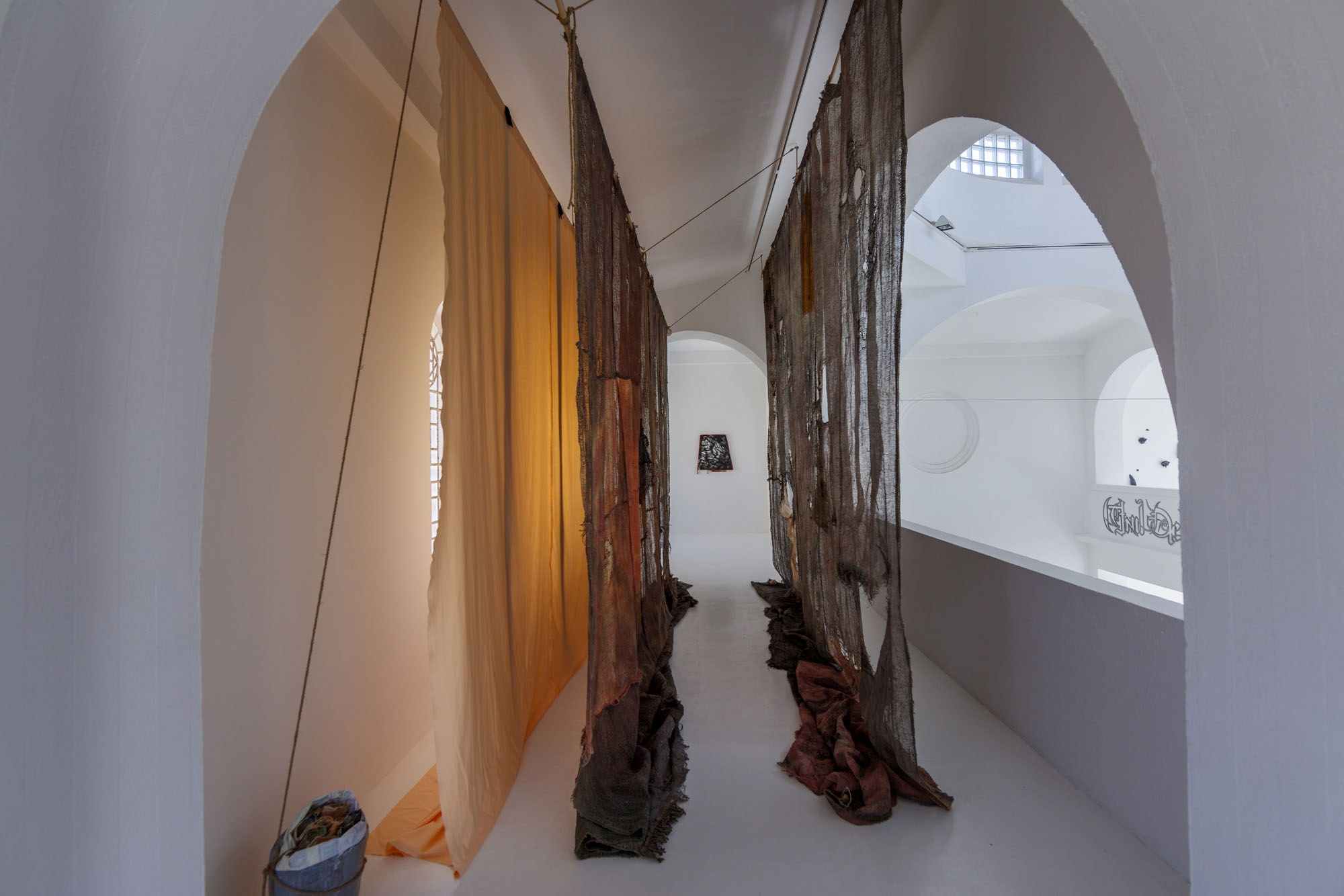
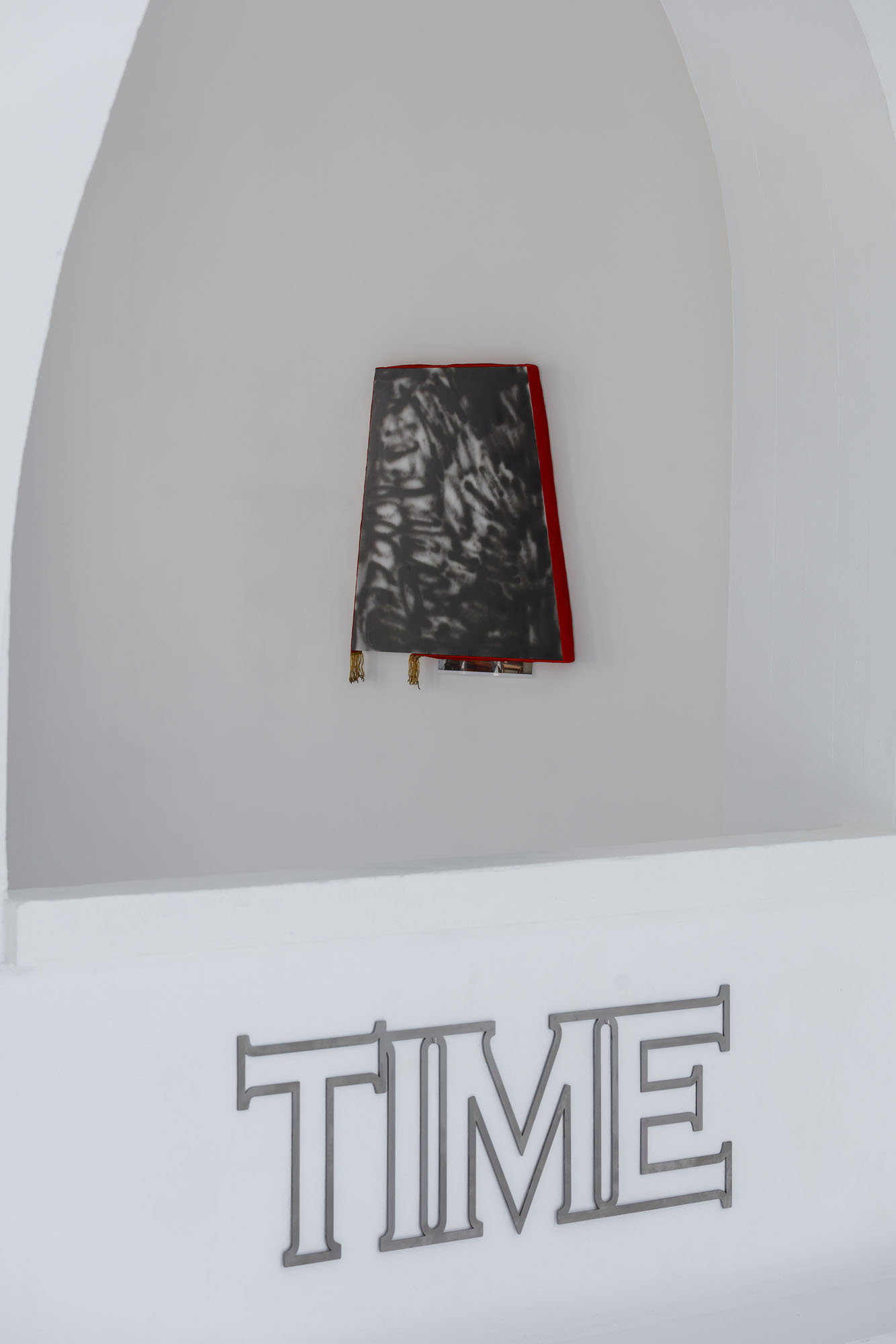
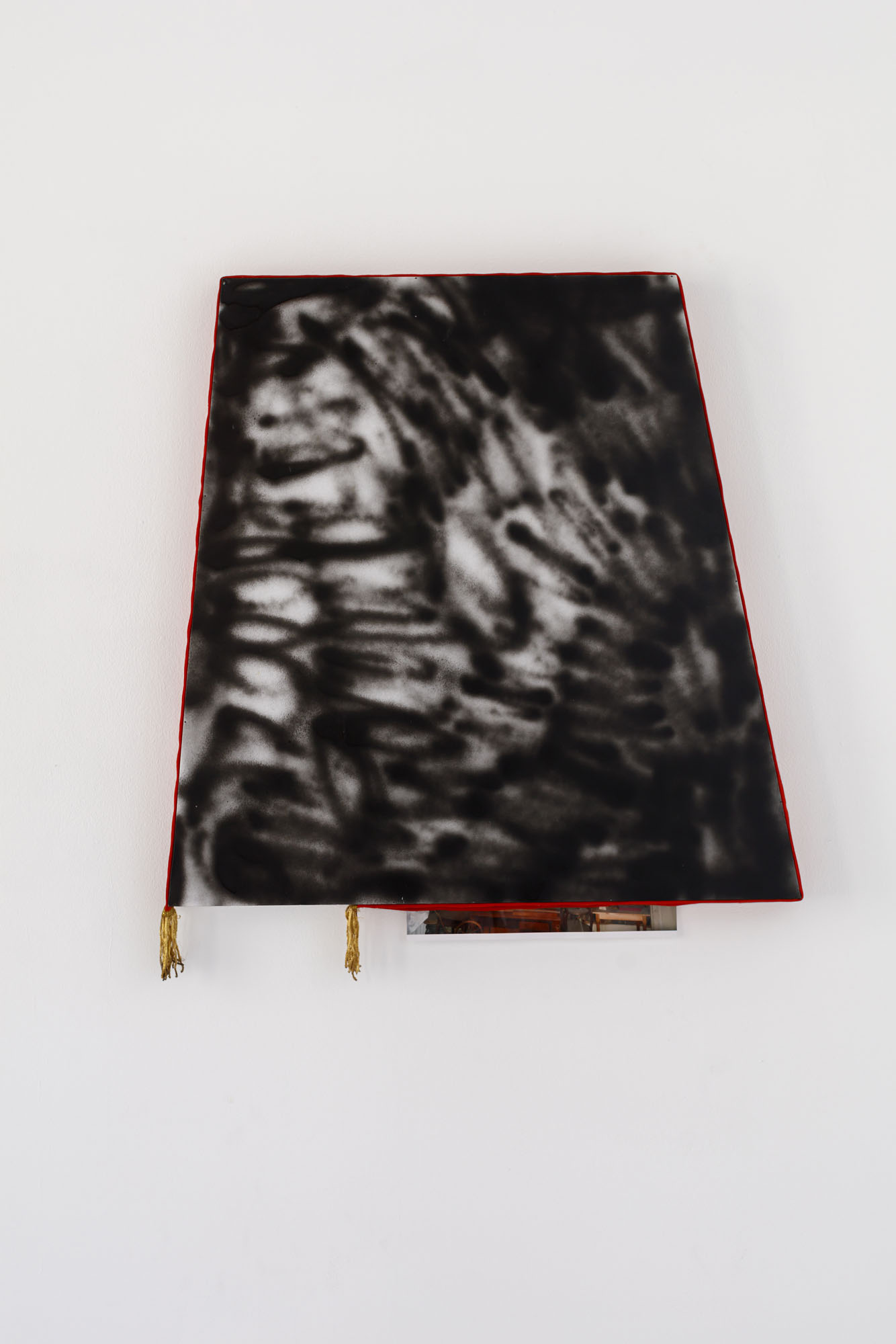
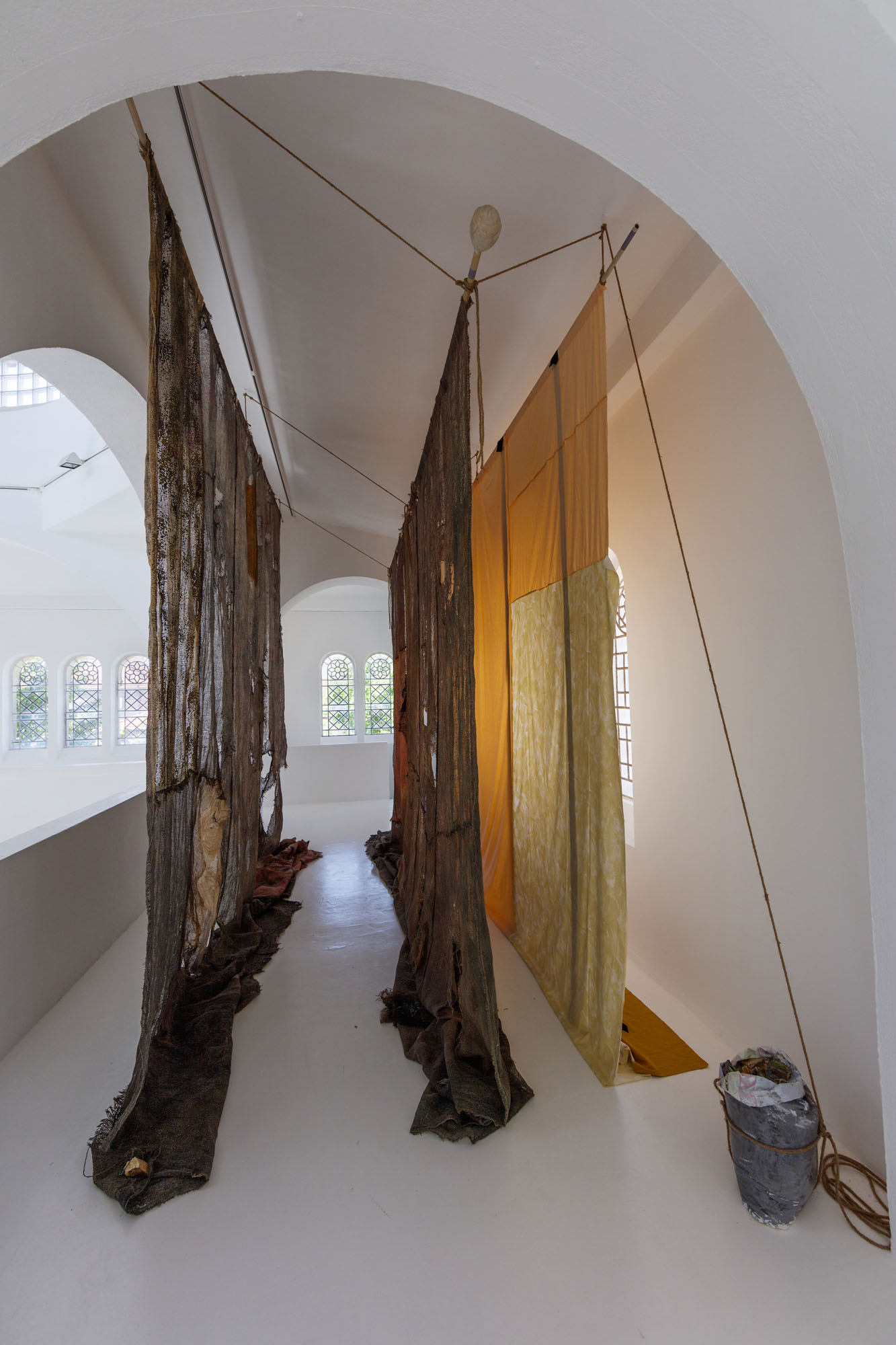
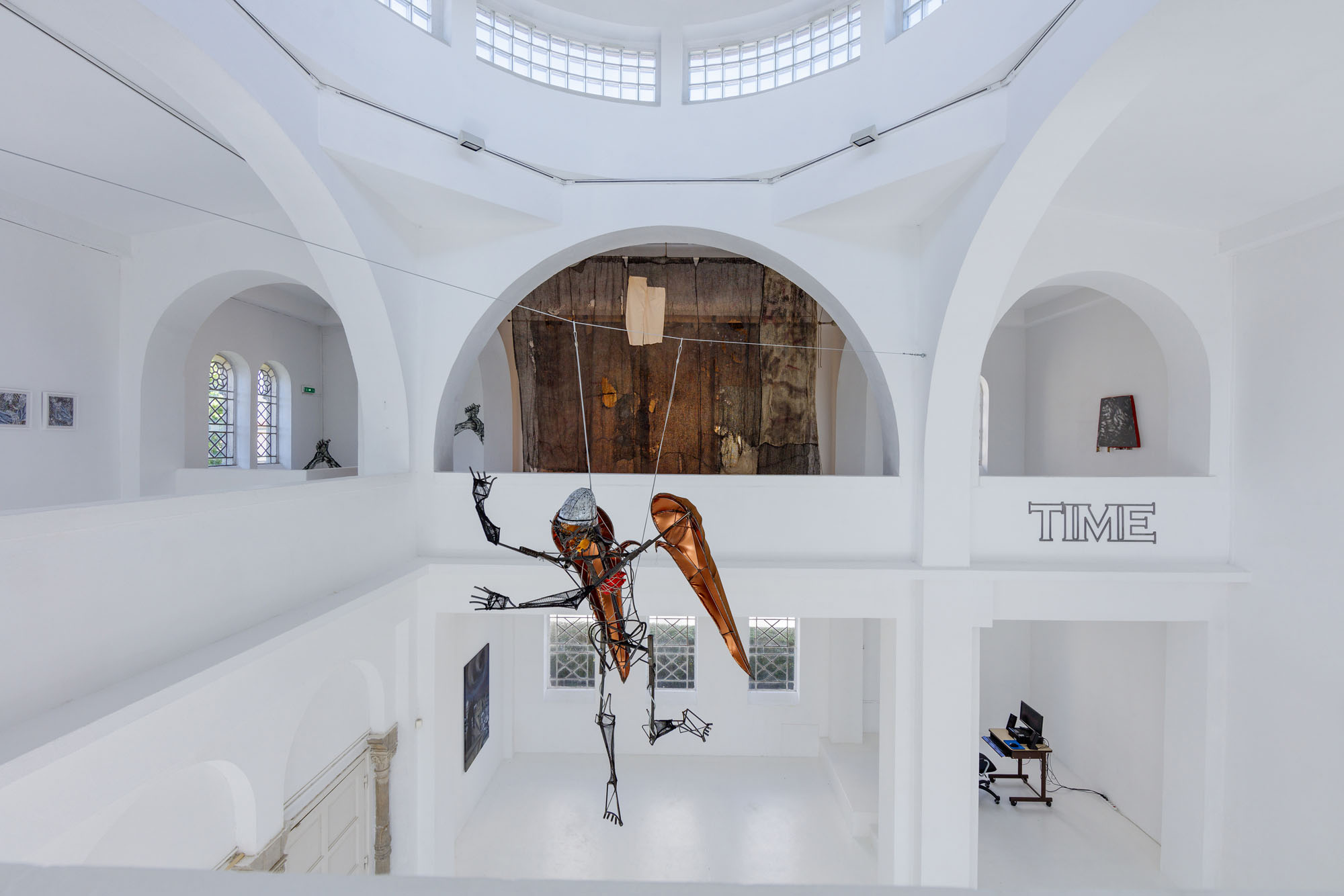
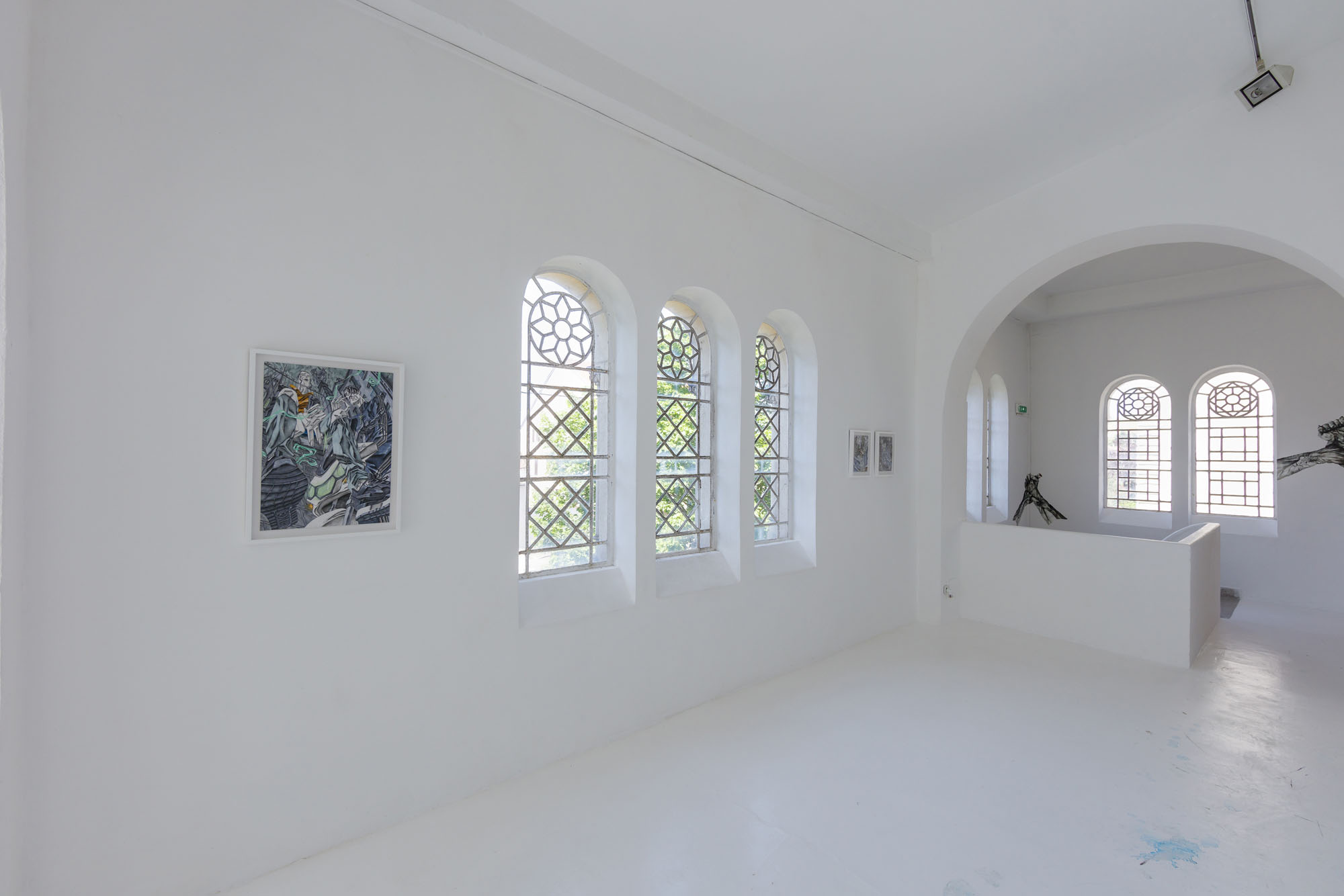
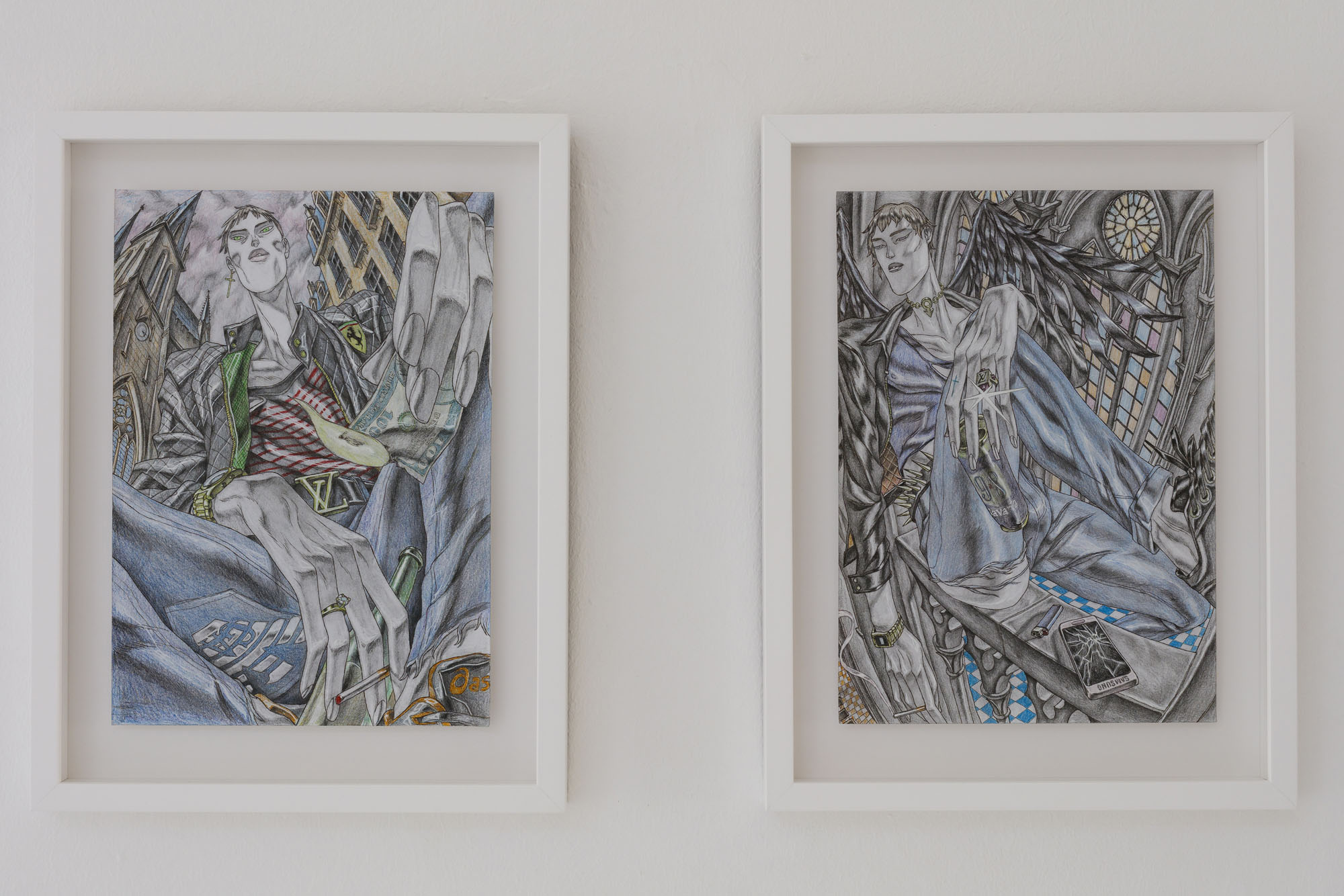
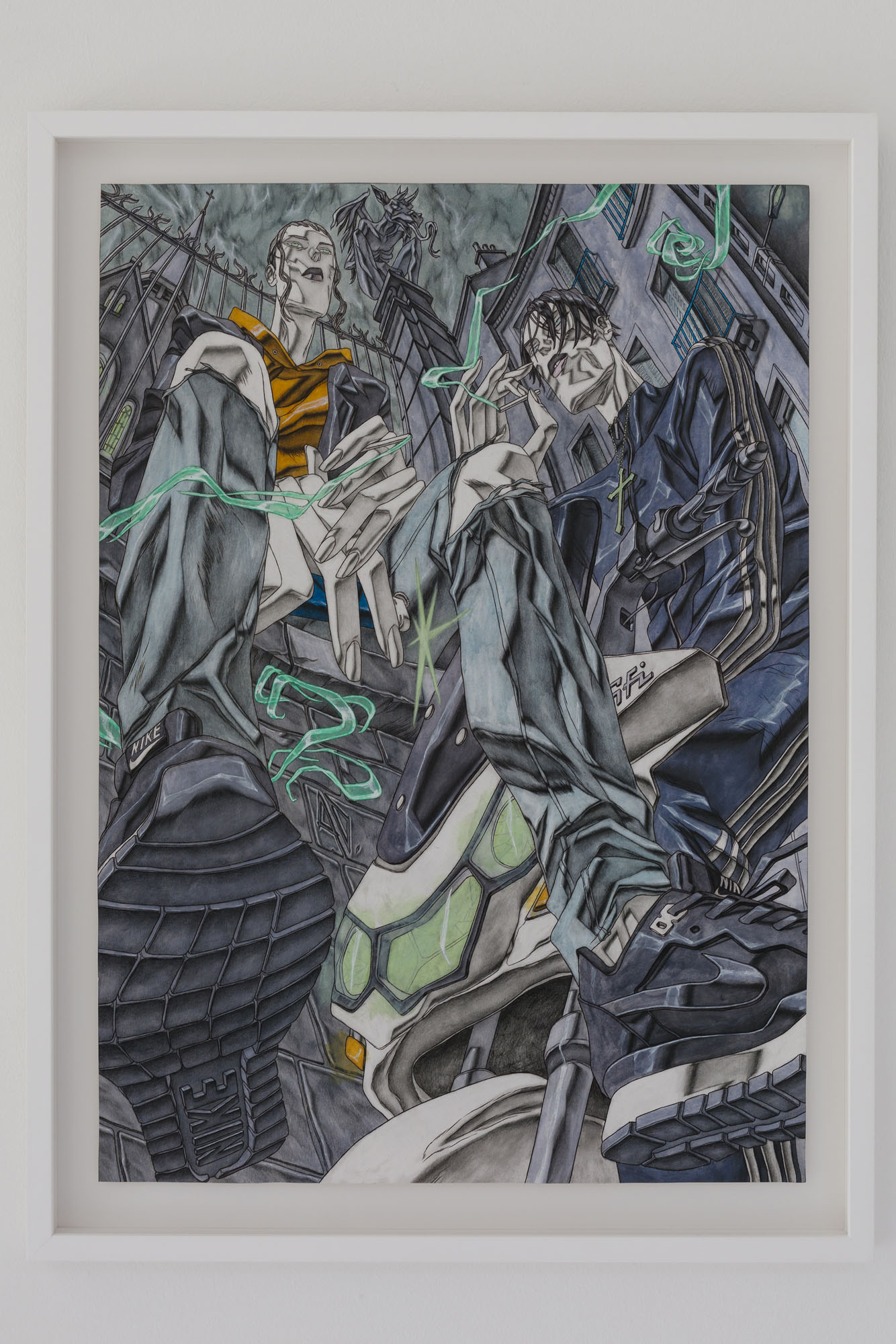
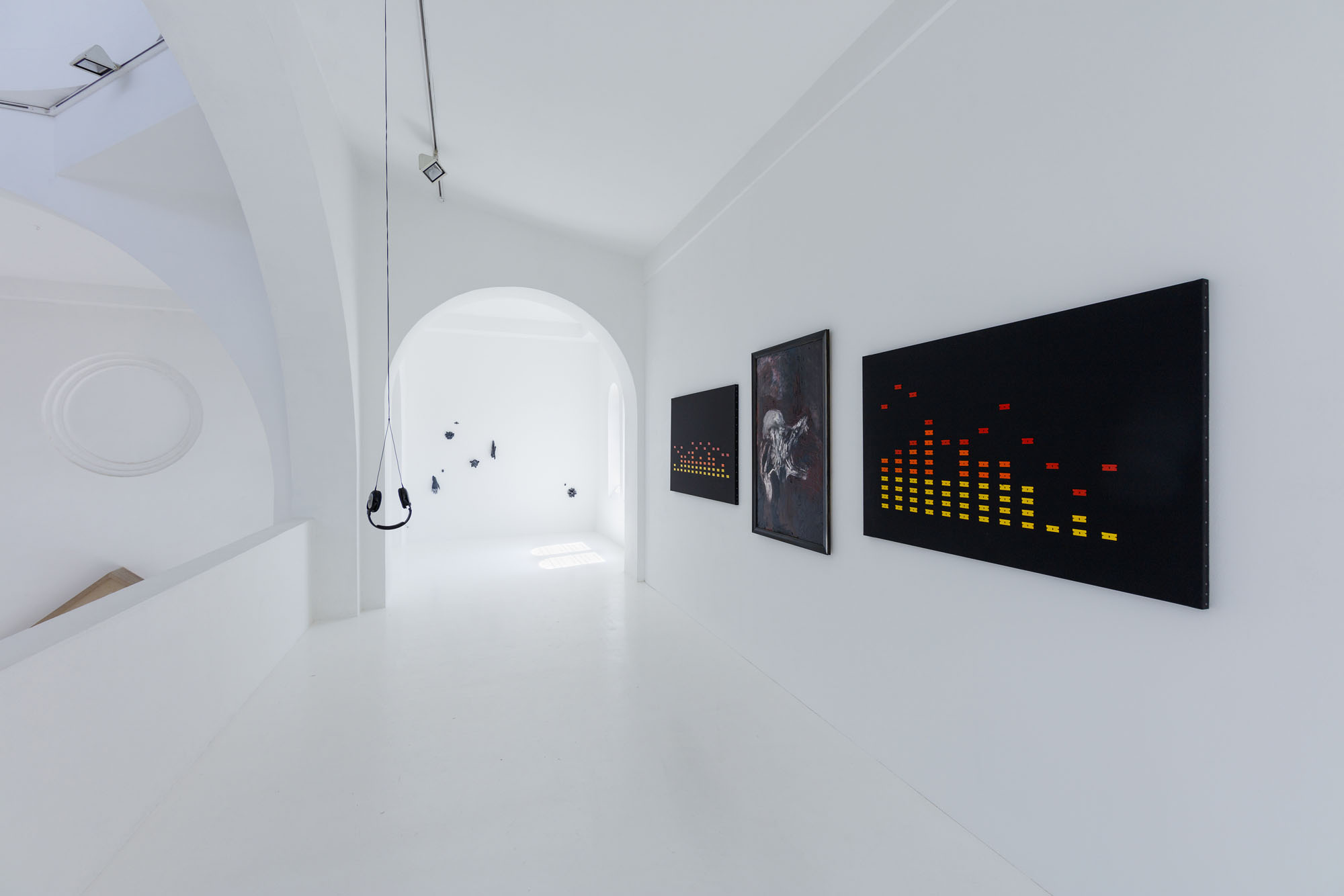
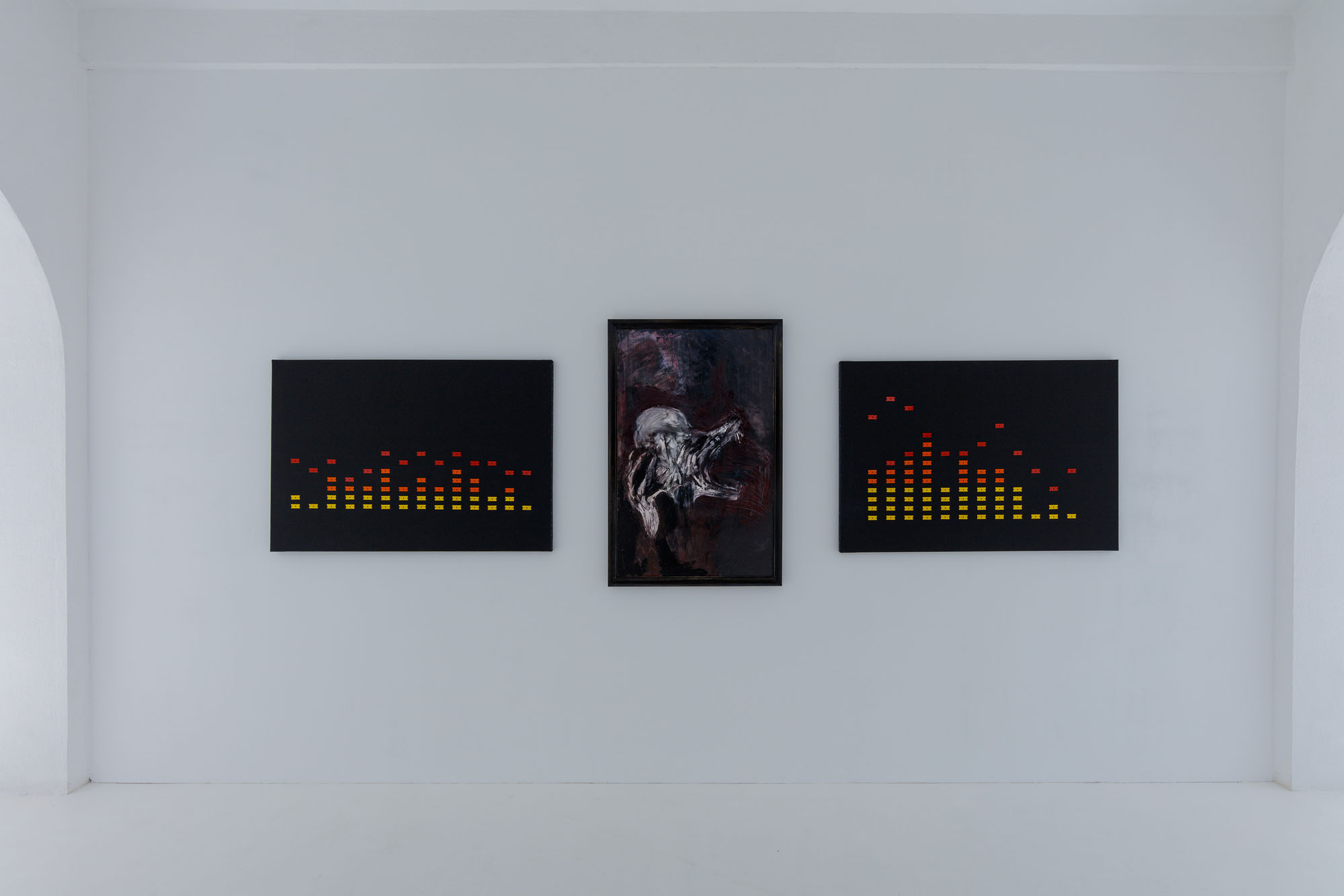
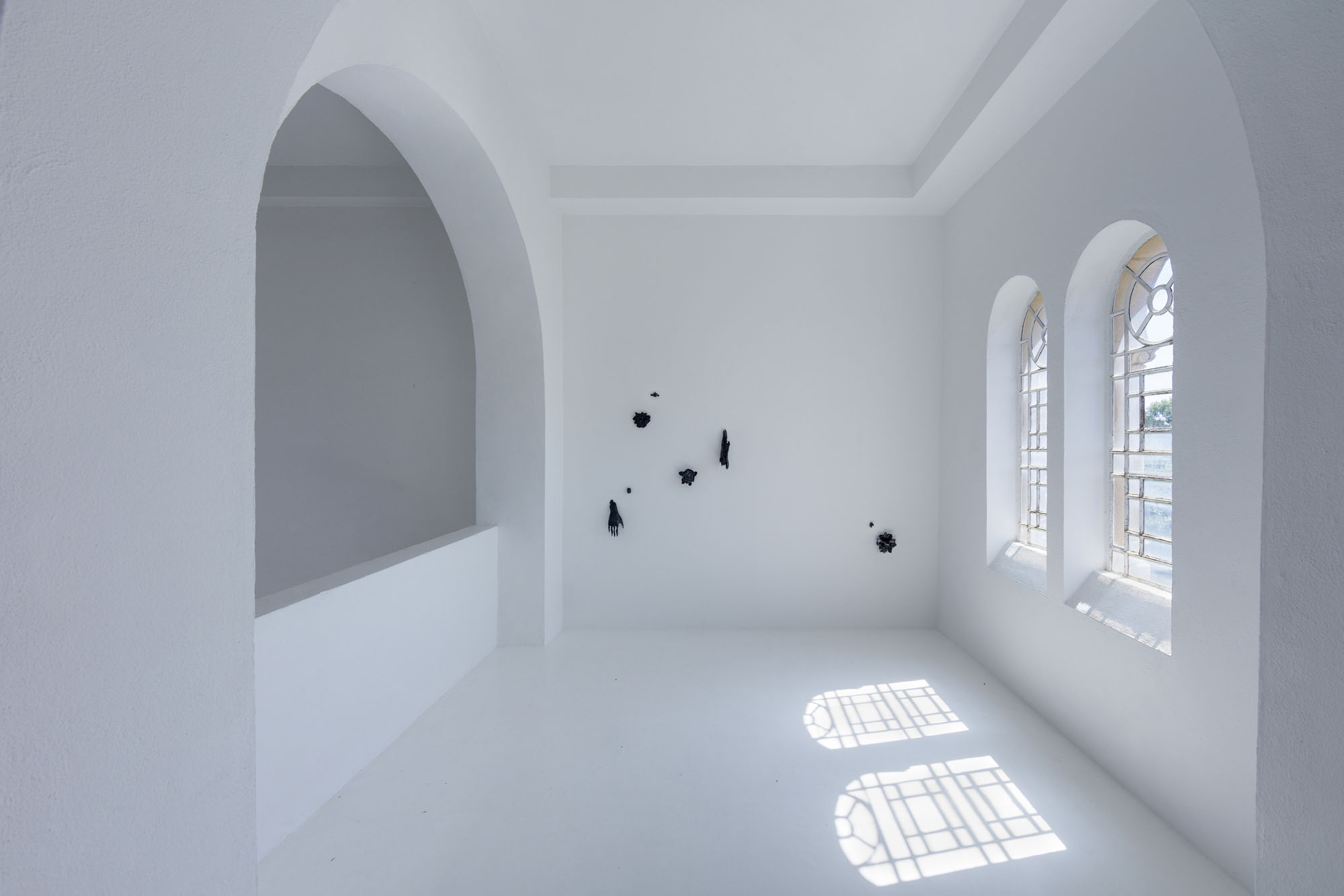
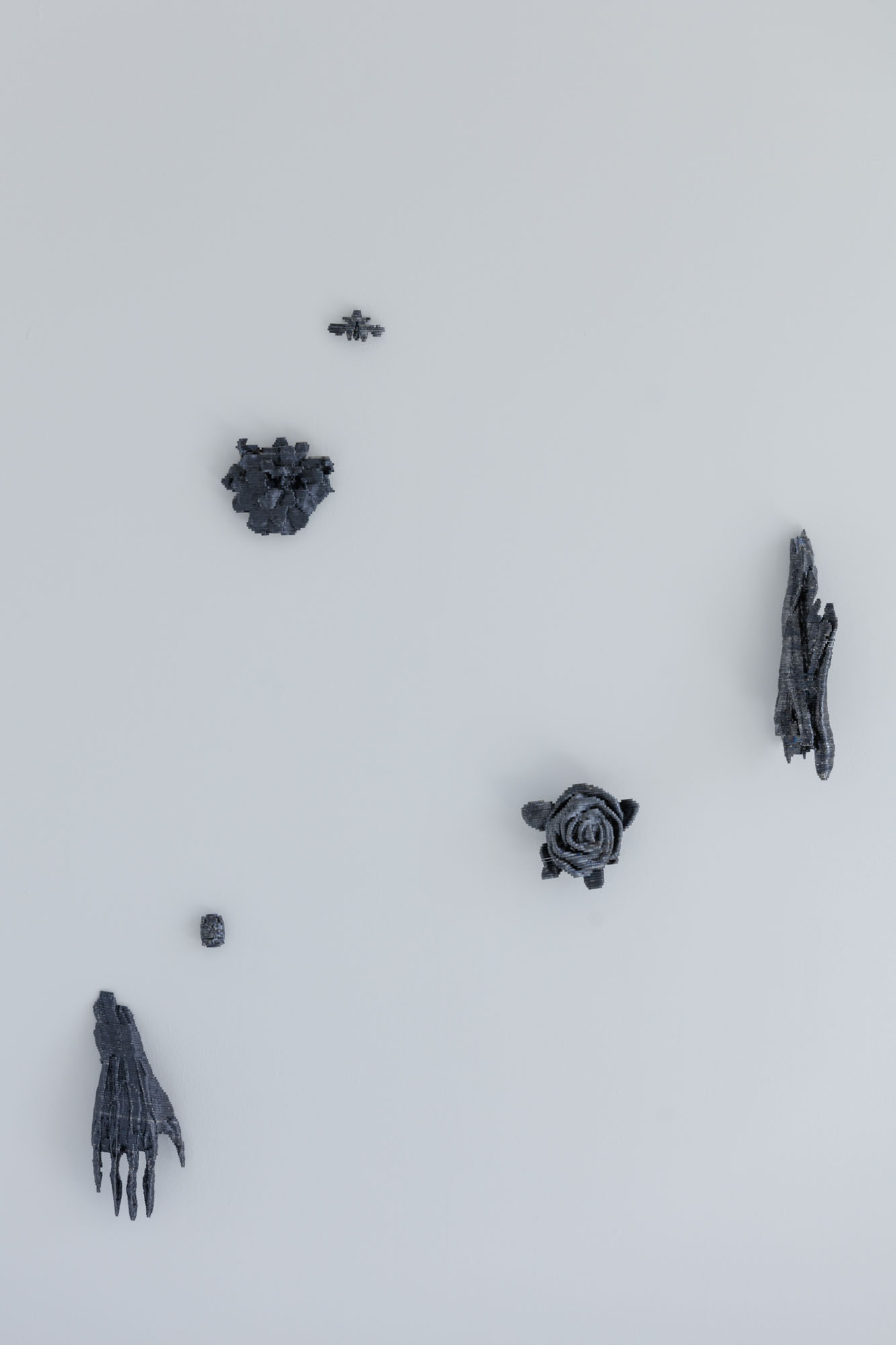
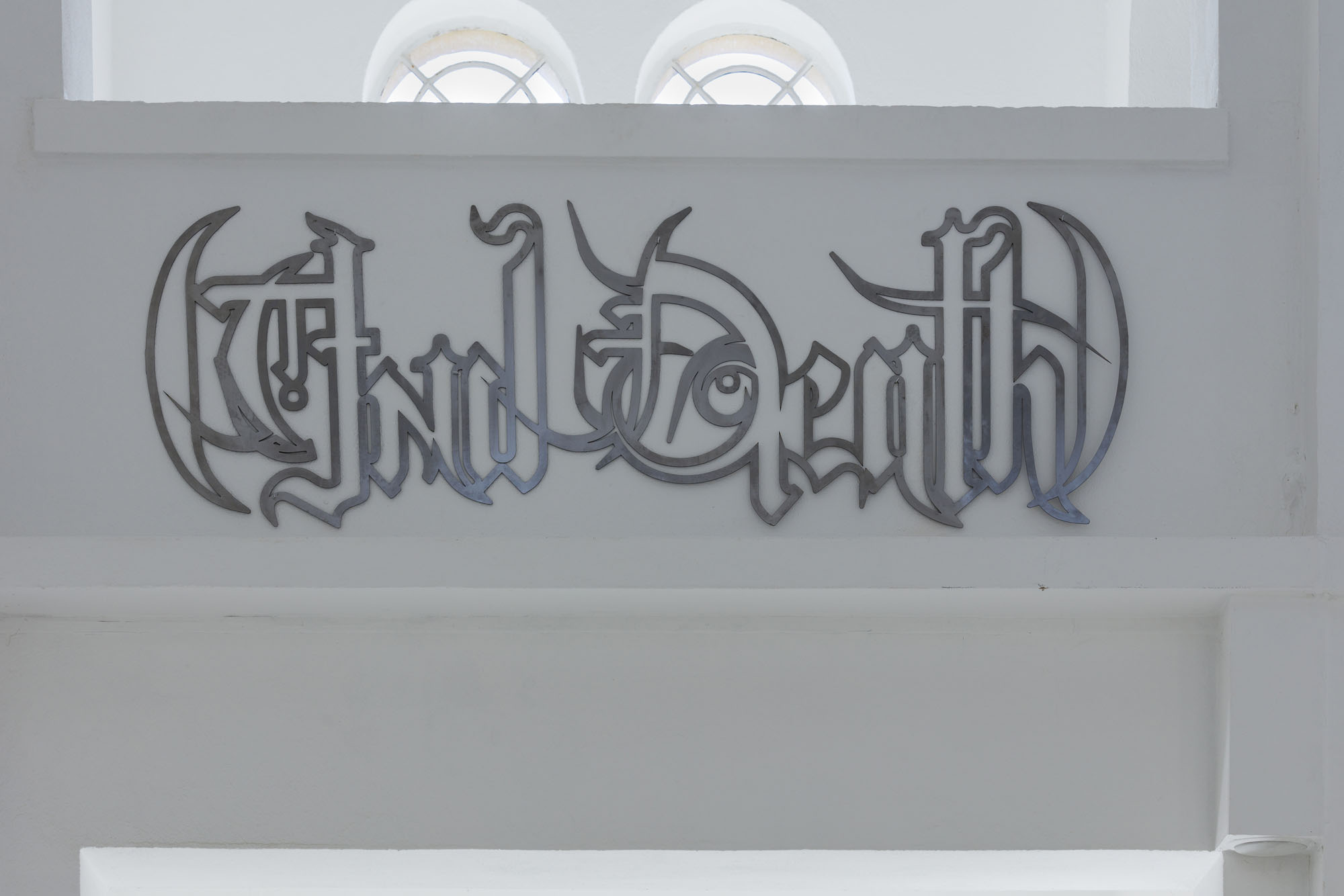
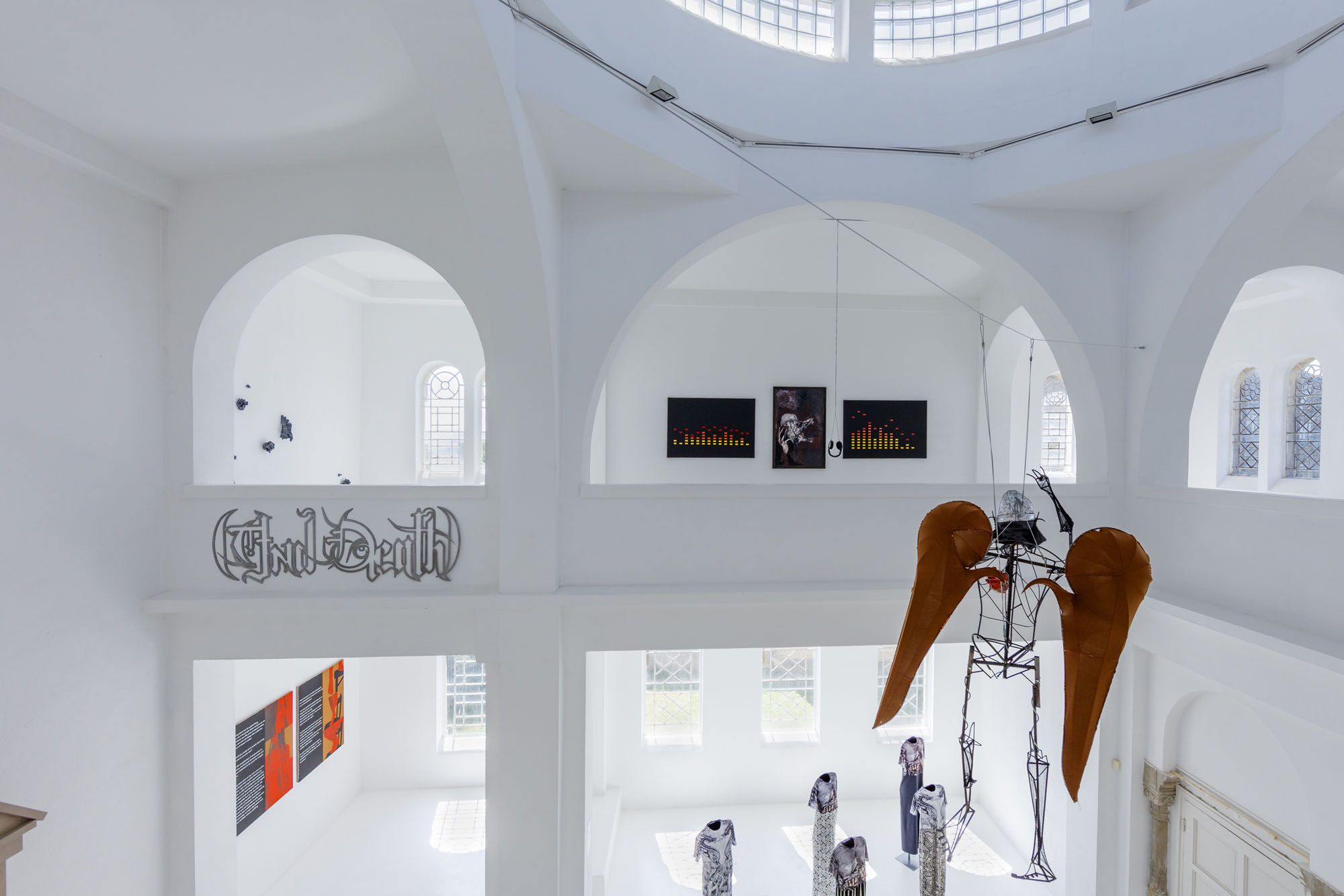
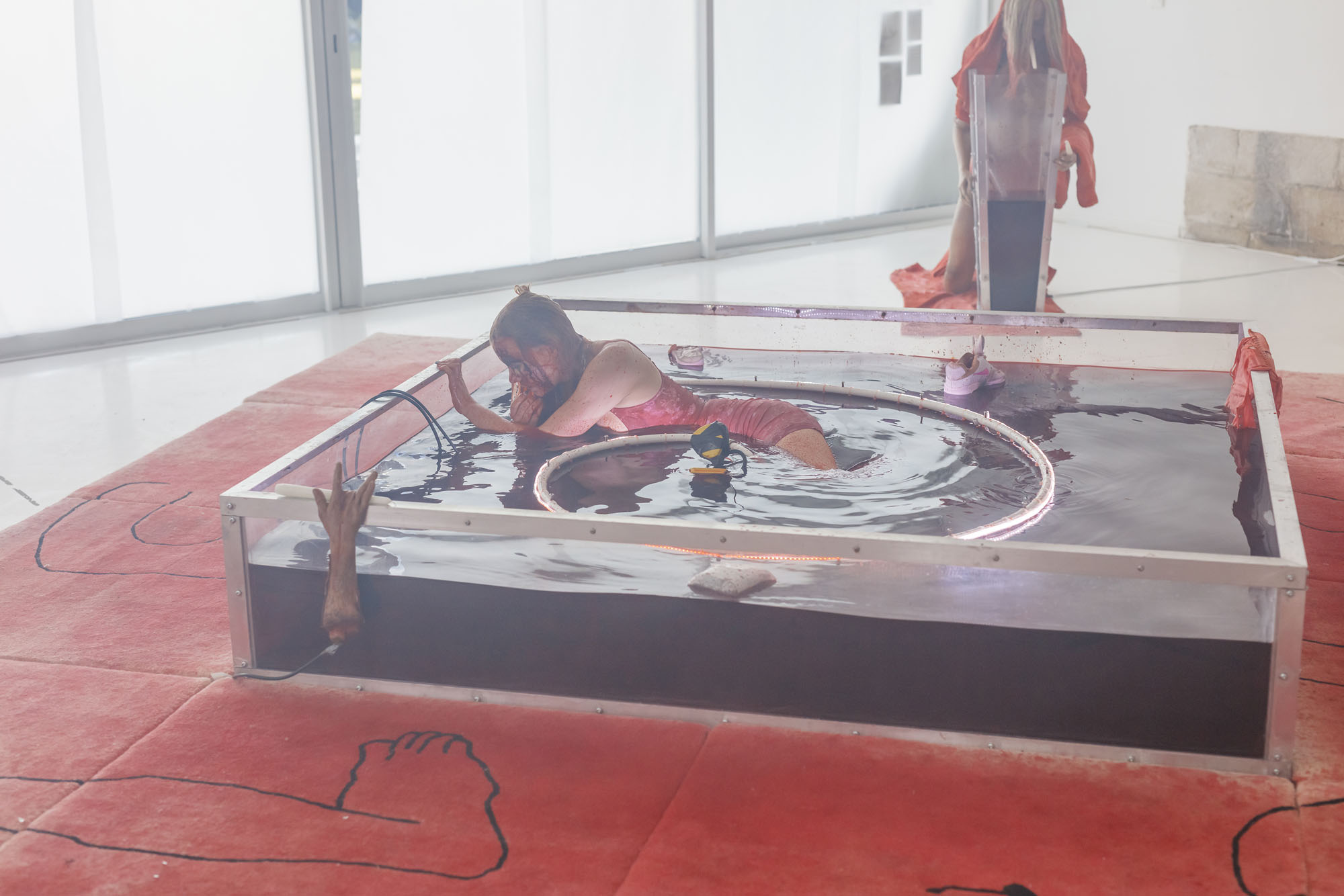
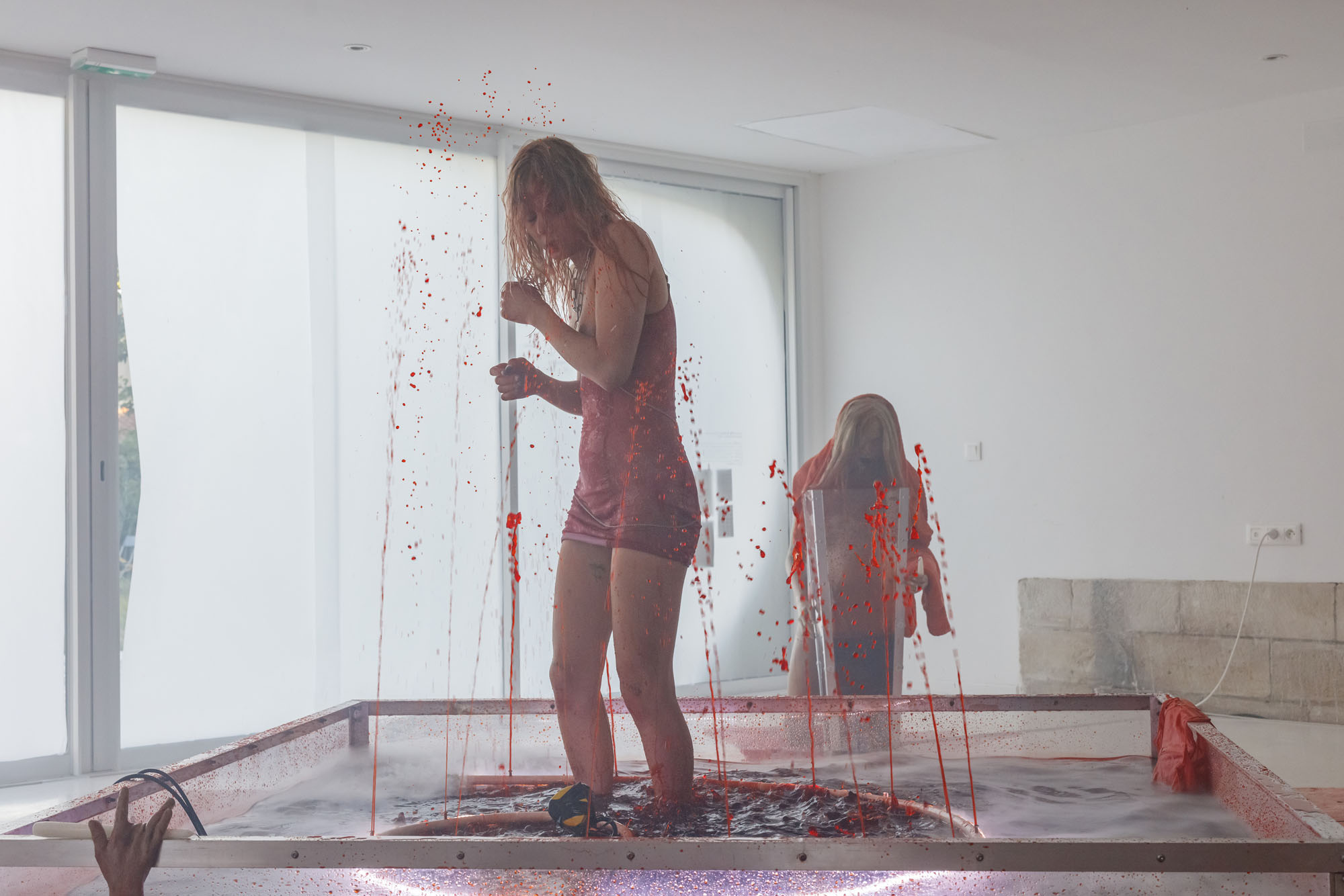
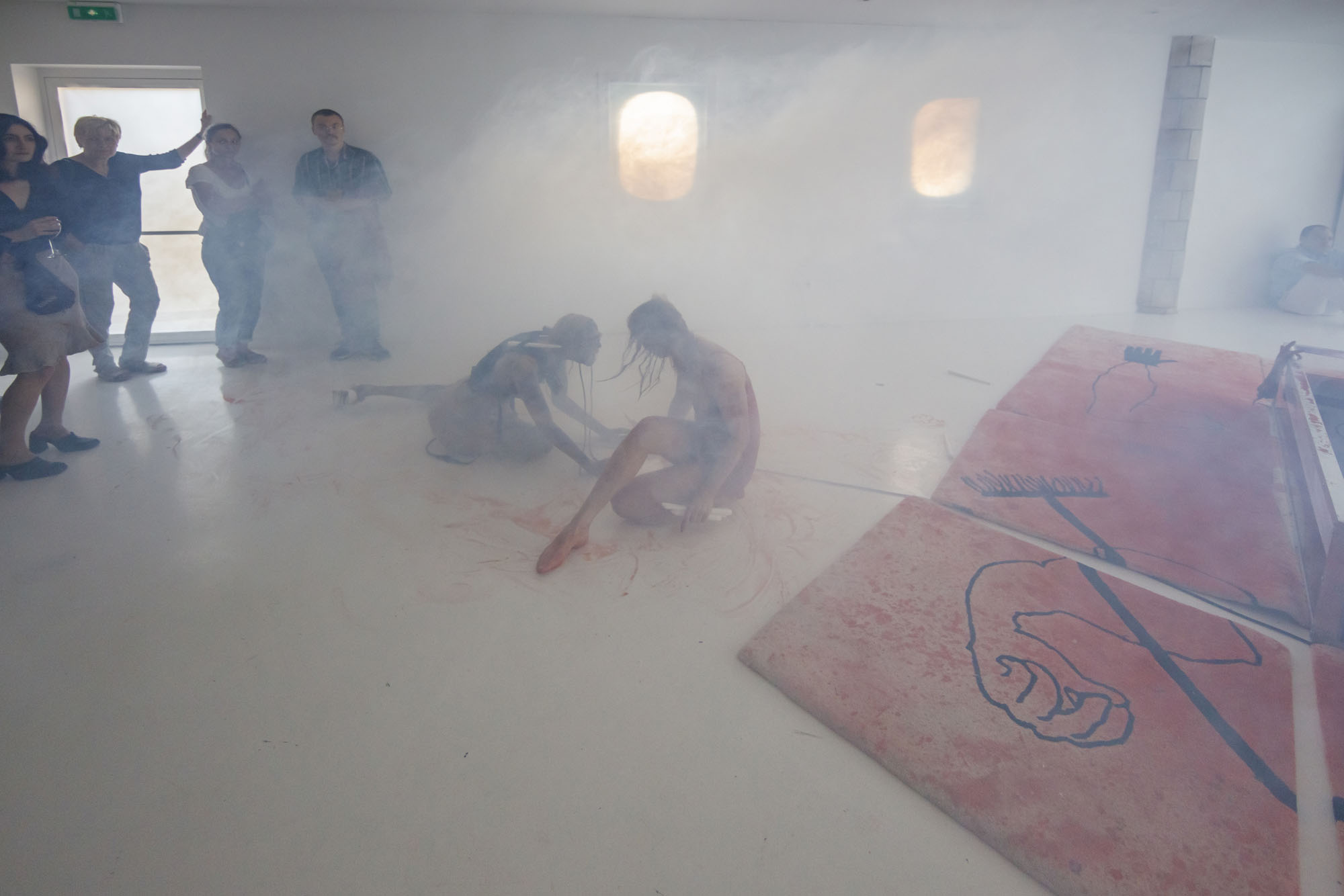
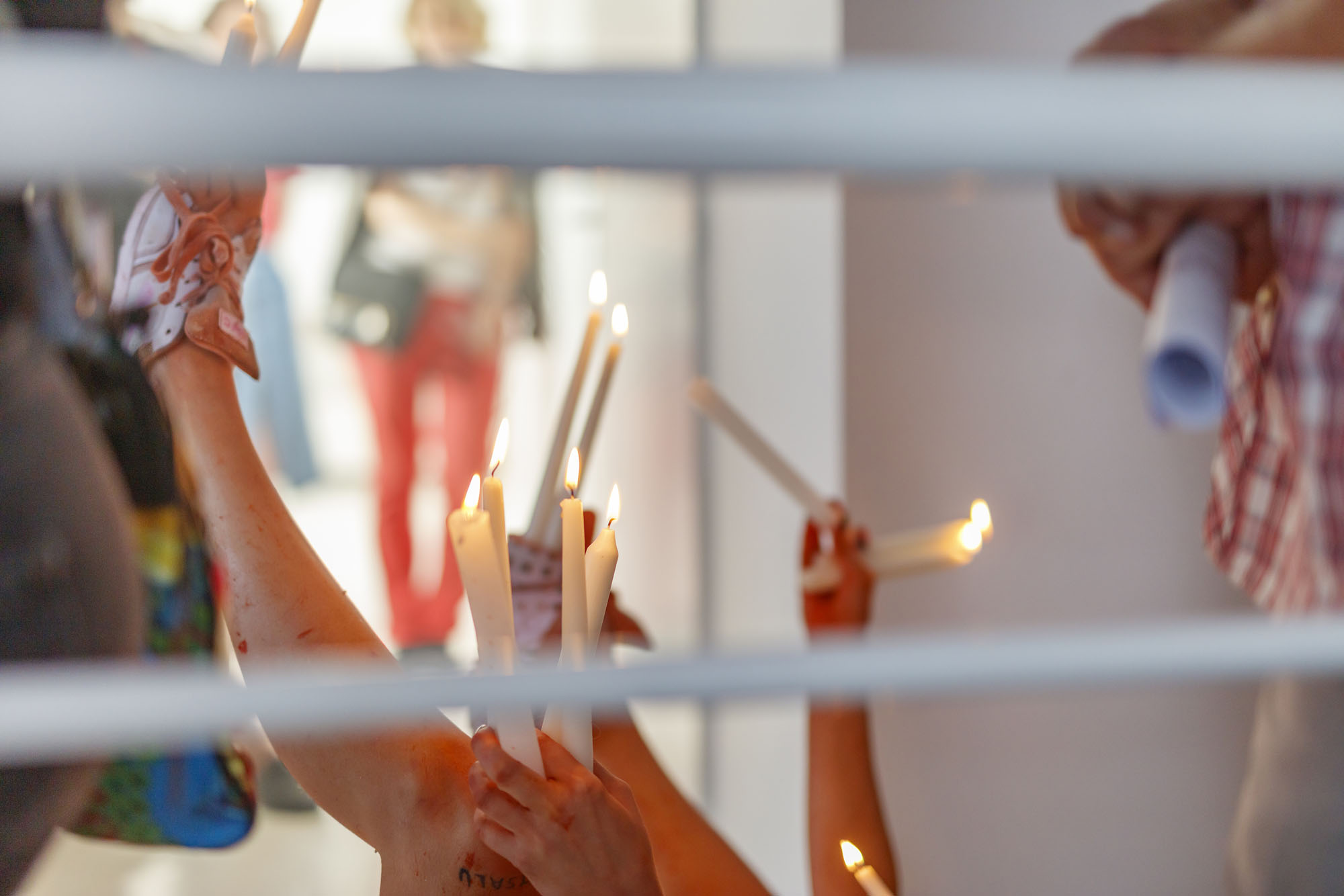
Digital Gothic
Zoe Barcza, Alfred Boman, Nicolas Ceccaldi, Victoria Colmegna, Morag Keil, Clémence de La Tour du Pin, Maria Metsalu, Petros Moris, Jill Mulleady, New Noveta, David Rappeneau, Viktor Timofeev
At Centre d’art contemporain-la synagogue de Delme, Delme, France
June 22 – September 29, 2019
Photography: all images copyright and courtesy of the artist and Centre d’art contemporain-la synagogue de Delmer
Centre d’art contemporain-la synagogue de Delme
Previous Articles
OFLUXO is proudly powered by WordPress
